After researching rules and conventions of photography I finally thought that I was able to proceed onto the actual topic of political landscapes and how I could go about exploring the idea behind it. I really like the idea of surrealism and the use of conventions that I had previously used in various shoots and so thought it would be interesting to relate it to people, landmarks and landscapes. The artists I found to be of particular influence towards my interests are Edward Burtynsky and Donald Weber. By using these photographers as my primary influences for my political landscape shoot it would allow me to process the outcomes through different software such as Adobe Photoshop and Lightroom, creating differing outcomes due to the new range of possibilities that the apps presented.
For the shoot itself I wanted to look at the topic of consumerism, looking at things like: waste, shops, farmland and people. I thought by researching this topic it would perfectly define how the process of consumerism leads to its impacts regarding all aspects of society and how we live in Jersey. What I will be looking at in this shoot are how the use of consumerism changes and warps the outcome of the landscape around us. To get some ideas here is a mood-board to reflect various perspectives regarding the subject: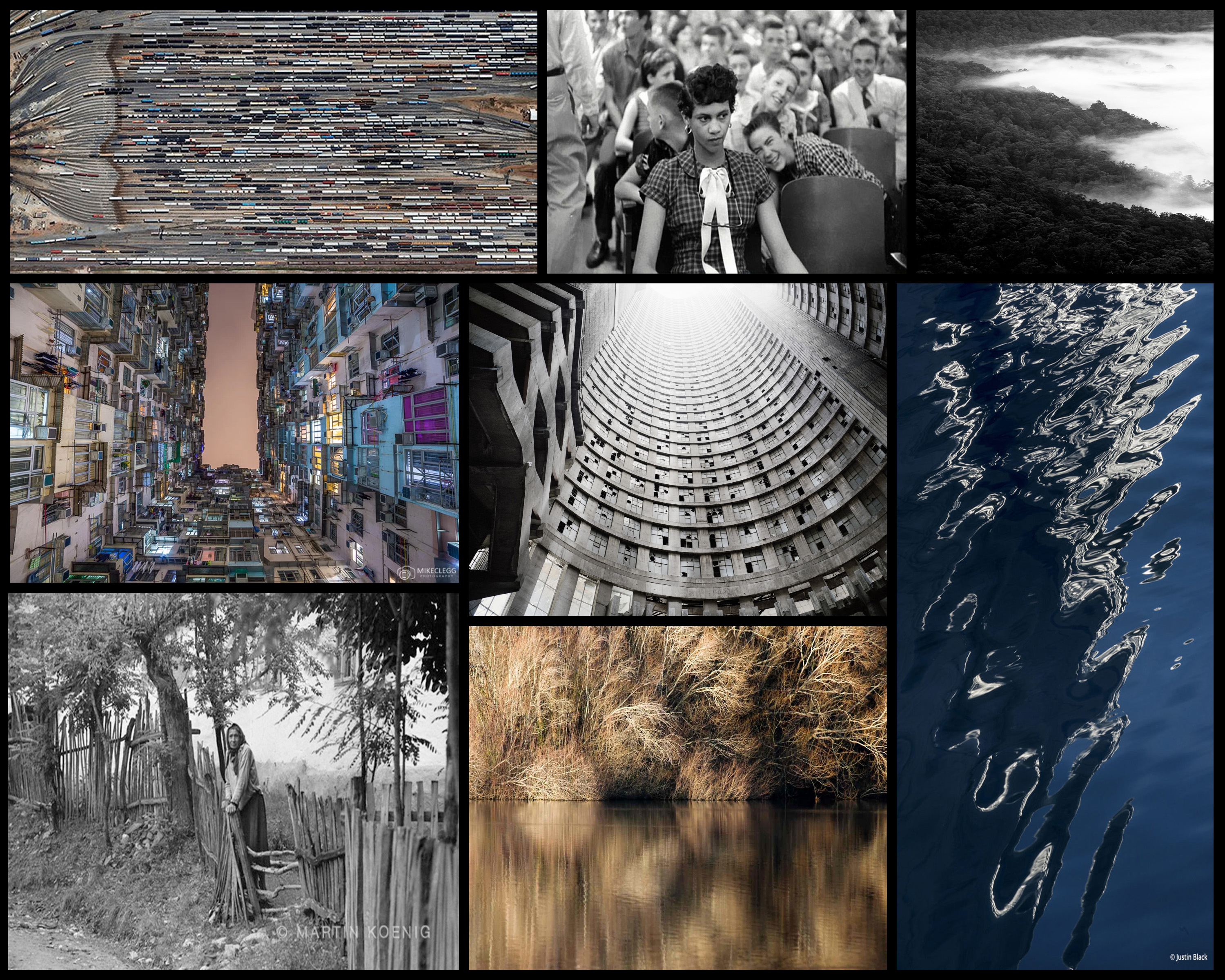 Leading examples of the certain photographers shown above interest me by looking at the subject of political landscapes in a more both a documentary and abstract approach than I would usually do. By doing this I could present my views and perspectives in a more implicit way rather than explicit, here are some mood-boards I have previously used in certain posts presenting the various photographers work:
Leading examples of the certain photographers shown above interest me by looking at the subject of political landscapes in a more both a documentary and abstract approach than I would usually do. By doing this I could present my views and perspectives in a more implicit way rather than explicit, here are some mood-boards I have previously used in certain posts presenting the various photographers work:
Before actually proceeding with the shoot itself I thought it would make sense to create a mind-map with the topics and points of interest that I wished to explore when walking around looking to take photos. By doing this it would enable me to quickly focus and identify what to look for, whilst also prevent time from being wasted during the shoot itself by not knowing what to do. Here are my ideas regarding the topic: After I had created the mind-map I finally decided I was ready to go onto the actual shoot. Using the ideas above as a basis for my shoot I chose to focus on political aspects of the outcome of consumerism and how they shaped the landscapes around us. Here are the results from the shoot that I took on the topic of political landscapes:

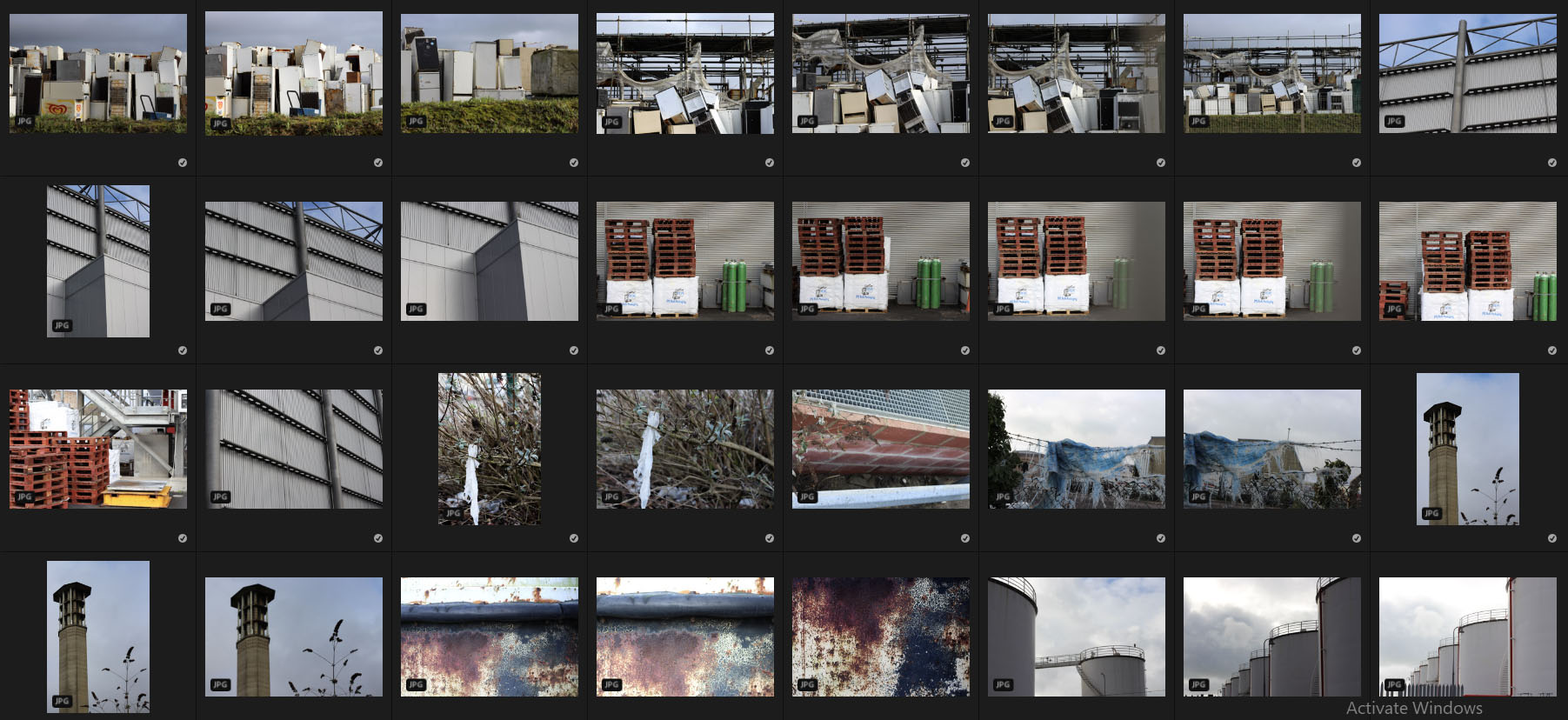
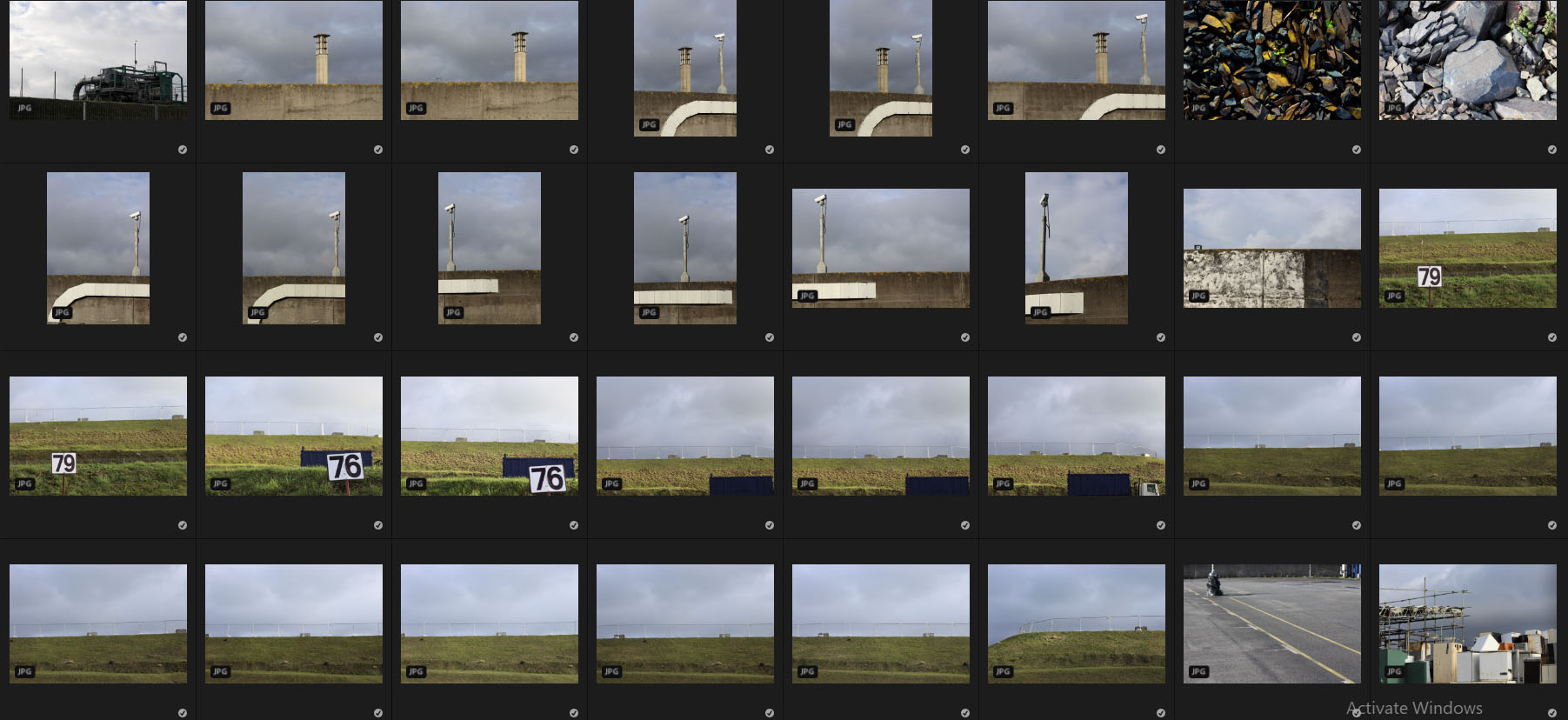
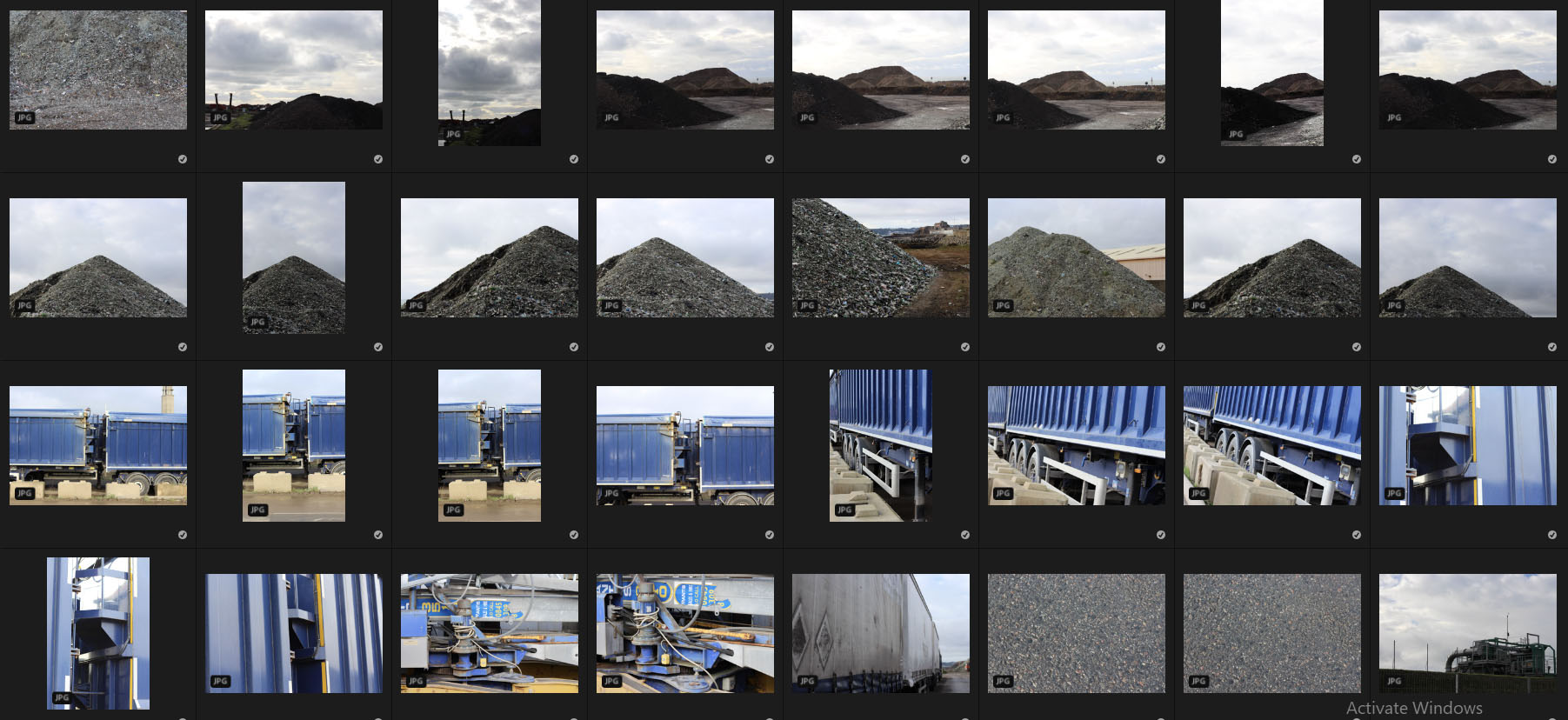
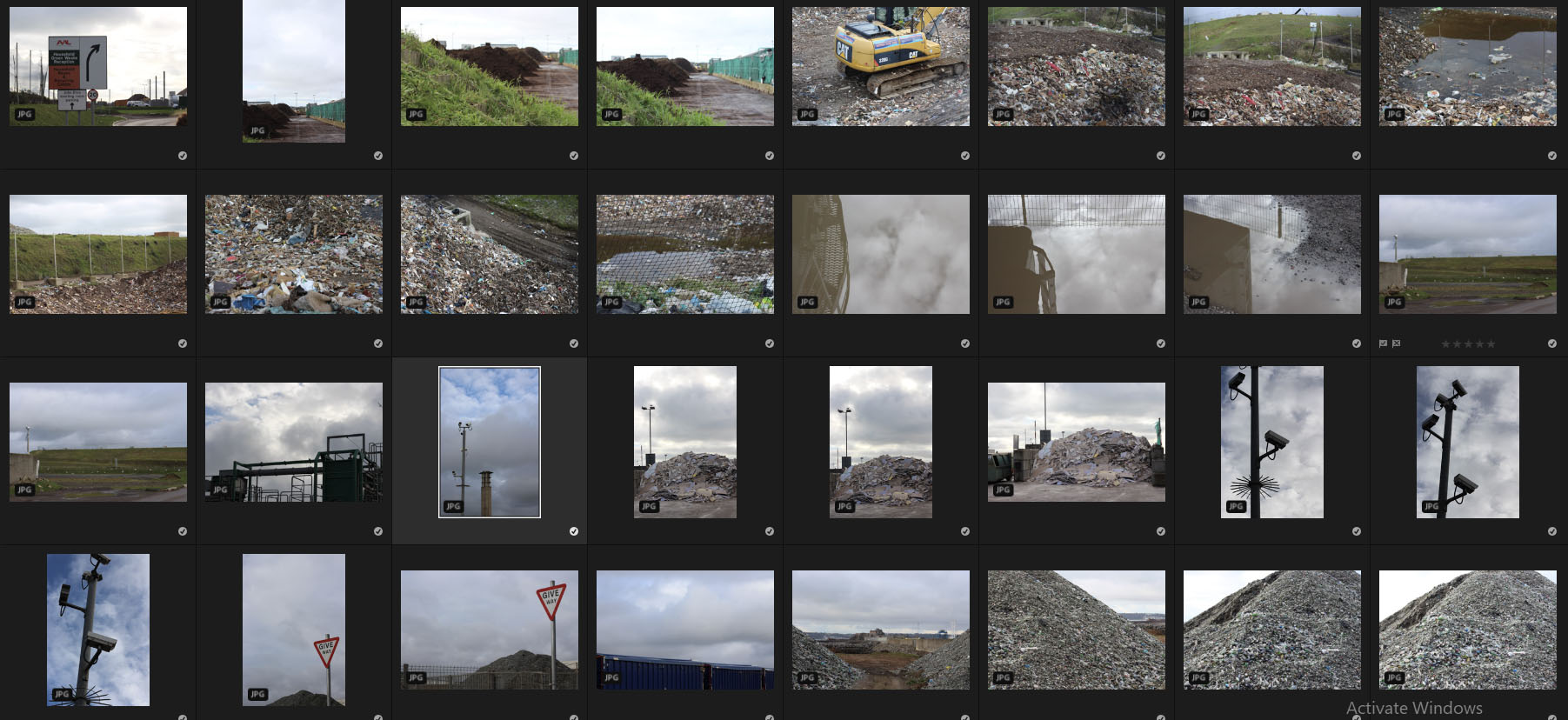
 Once I had finished with the shoot I decided it was time to select ten images that I thought best reflected and represented the photos overall, and how they related to my chosen topic. By doing this it would allow me later on to select an overall best image using the method of deduction. Here are my favorite images from the contacts sheets:
Once I had finished with the shoot I decided it was time to select ten images that I thought best reflected and represented the photos overall, and how they related to my chosen topic. By doing this it would allow me later on to select an overall best image using the method of deduction. Here are my favorite images from the contacts sheets:
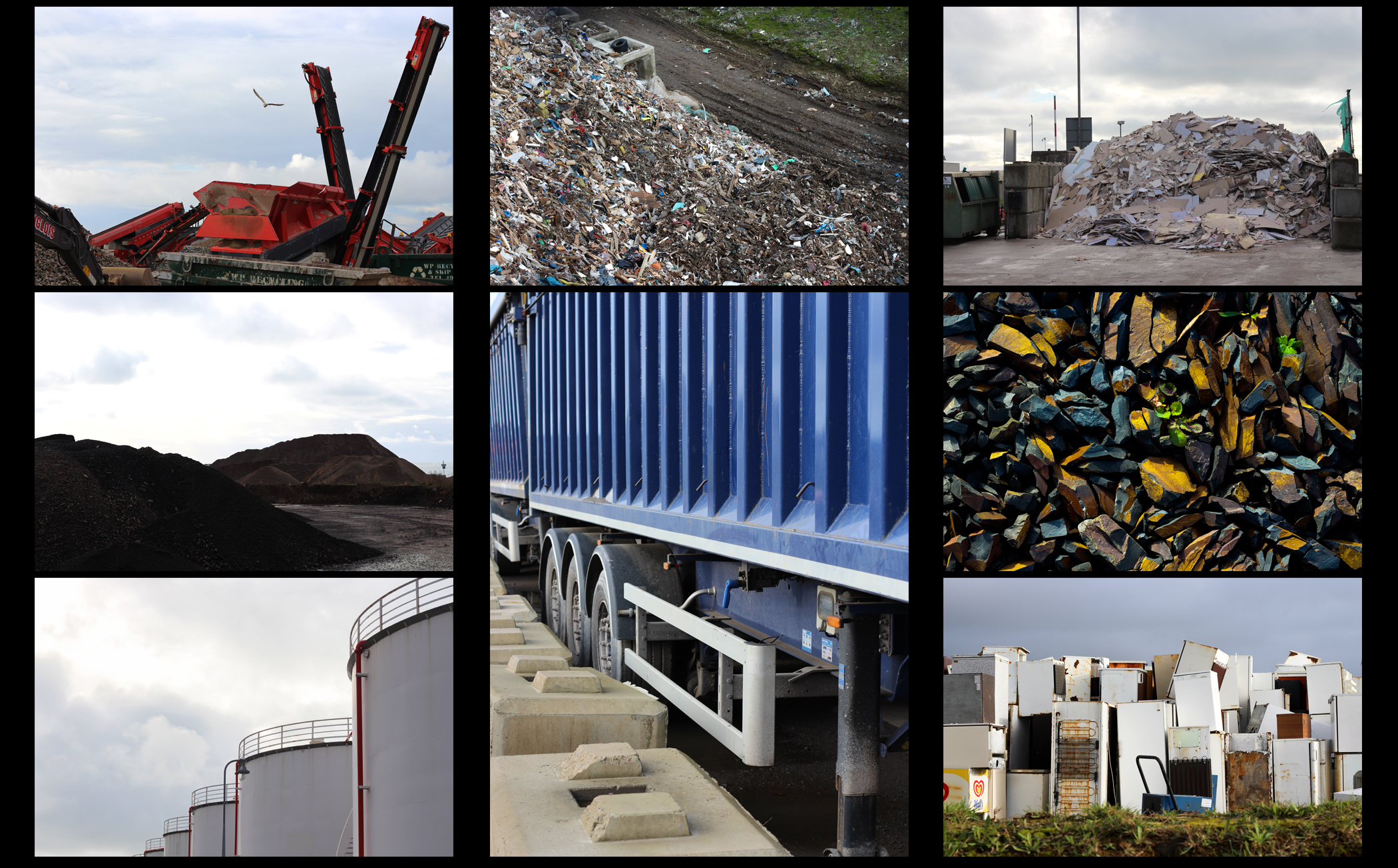 From here I then chose five of my best images out of the selection of ten, by doing this it would then allow me to analyze and study each image to greater detail, looking at the aspects that made me choose each picture. Here are my best five images from the shoot that I believe to reflect my intentions the best:
From here I then chose five of my best images out of the selection of ten, by doing this it would then allow me to analyze and study each image to greater detail, looking at the aspects that made me choose each picture. Here are my best five images from the shoot that I believe to reflect my intentions the best: I selected this image because of the clear contrast between the green grass and the now disposed of fridges. I found that this contrast really produced an insight into how the landscape had been changed due to the process of consumerism, and how careless we have become in the outcome of out waste. I particularly liked how the concrete block broke up the generic pattern created by the sky, fridges and grass, adding a new perspective into the landscape rubbish is dumped into. This is complimented through the use of the darkened sky which casts an overlying grim tone across the entire image, preventing any chance of vivid colours coming through.
I selected this image because of the clear contrast between the green grass and the now disposed of fridges. I found that this contrast really produced an insight into how the landscape had been changed due to the process of consumerism, and how careless we have become in the outcome of out waste. I particularly liked how the concrete block broke up the generic pattern created by the sky, fridges and grass, adding a new perspective into the landscape rubbish is dumped into. This is complimented through the use of the darkened sky which casts an overlying grim tone across the entire image, preventing any chance of vivid colours coming through. 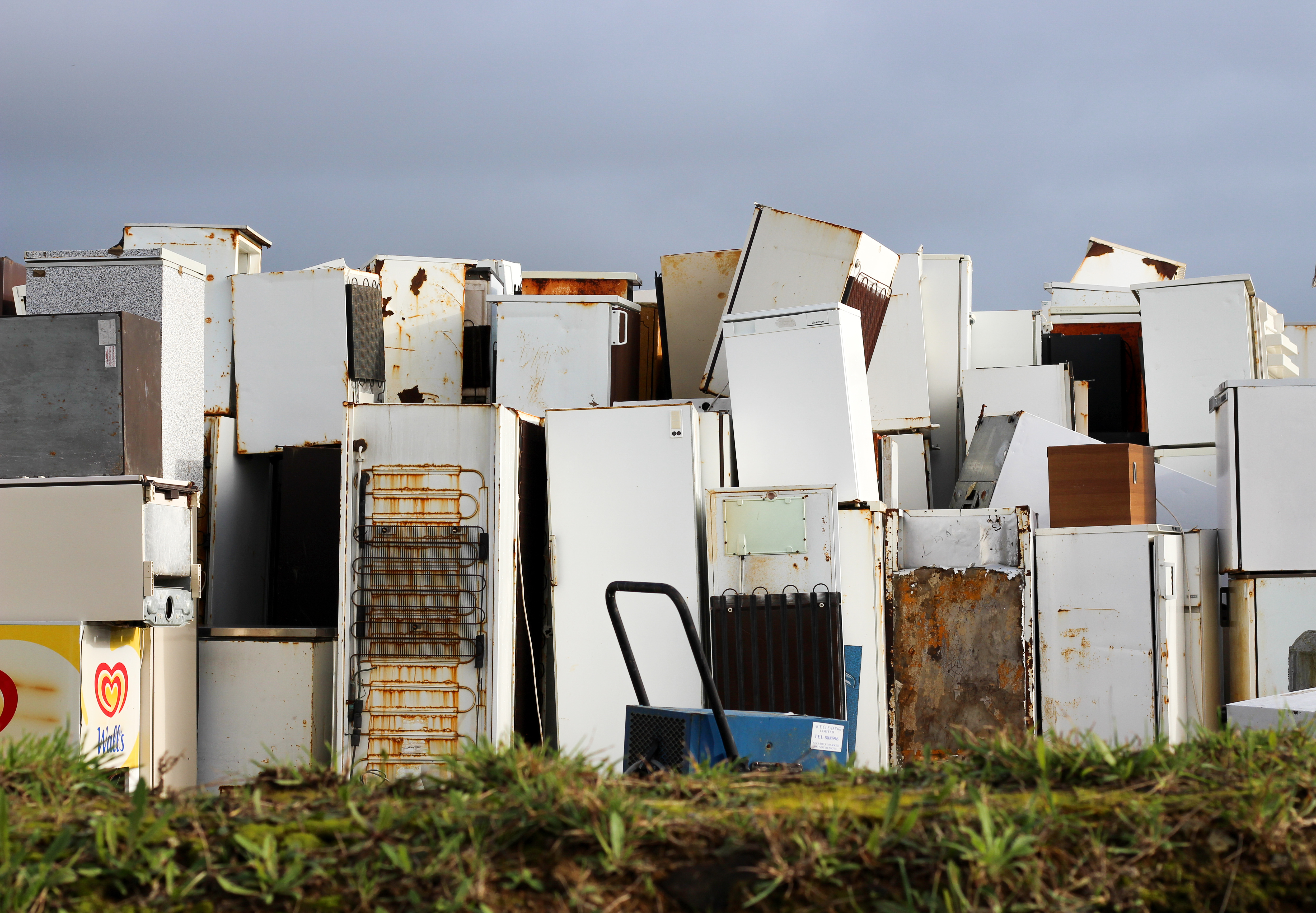 My list the first image I found that the pattern created by the sky, fridges and grass made not just an aesthetic result but also produced insights into our islands waste industry. What made me select this photo was how the blue cooler in the center of the image really broke up the symmetry and became the initial focus when skimming over the piece. I found that the wall of fridges really appealed to me as not only was it unusual but how it also reflect the sheer mass of items that have become unwanted to us.
My list the first image I found that the pattern created by the sky, fridges and grass made not just an aesthetic result but also produced insights into our islands waste industry. What made me select this photo was how the blue cooler in the center of the image really broke up the symmetry and became the initial focus when skimming over the piece. I found that the wall of fridges really appealed to me as not only was it unusual but how it also reflect the sheer mass of items that have become unwanted to us.
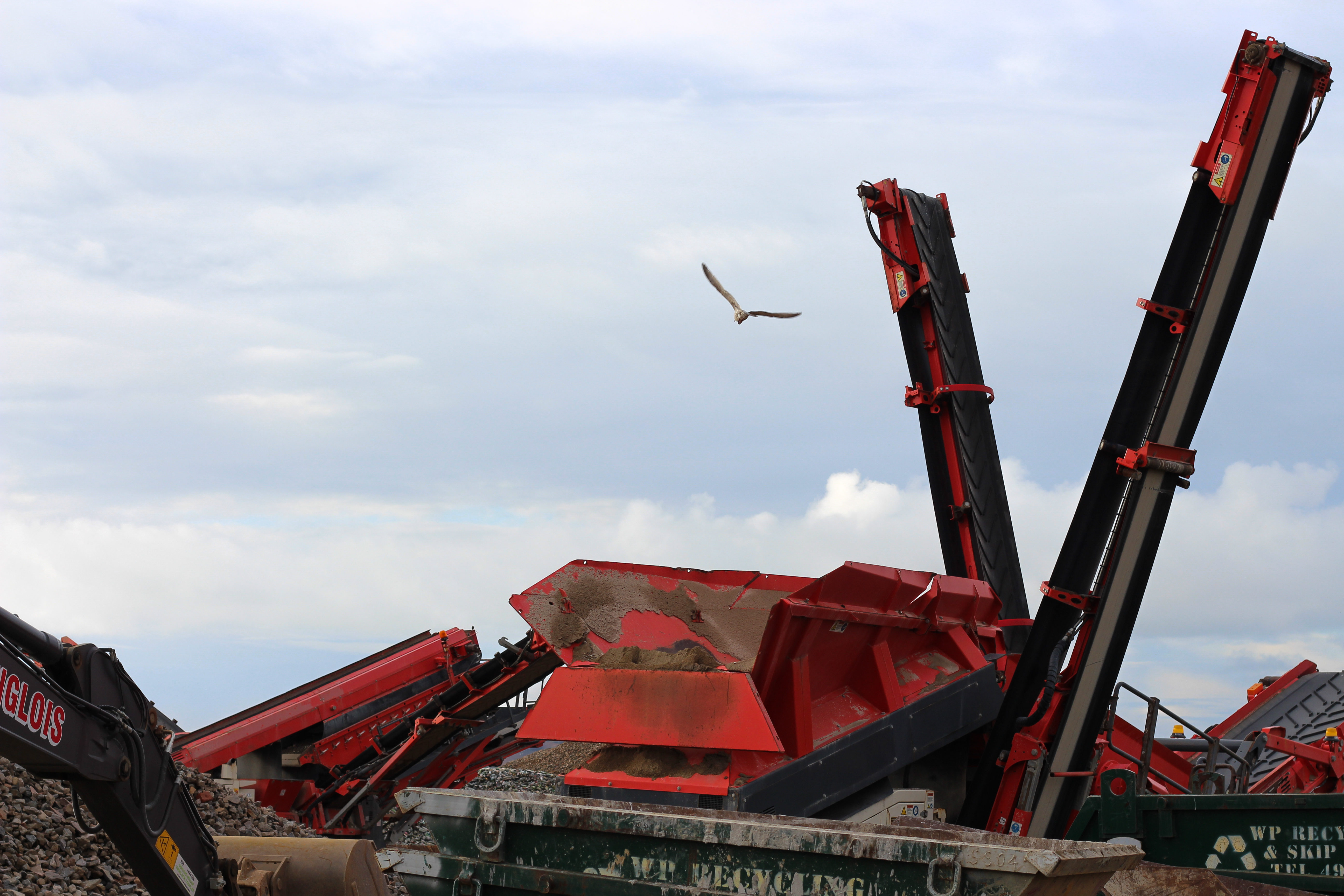 This image to me produced an impact through how the knowledge of what they are used for. The machines here are in the process of digging new landfills to dump rubbish in, in which the surrounding area is covered in seagulls living off the excess waste produced from of consumerism. The rest present in the image appealed to me through how it looked menacing and large compared to the rest of the landscape, but also how the wildlife such as the gulls centered their lives around the actions of how these machines operated.
This image to me produced an impact through how the knowledge of what they are used for. The machines here are in the process of digging new landfills to dump rubbish in, in which the surrounding area is covered in seagulls living off the excess waste produced from of consumerism. The rest present in the image appealed to me through how it looked menacing and large compared to the rest of the landscape, but also how the wildlife such as the gulls centered their lives around the actions of how these machines operated.  I selected this image because it shows the outcome of the machinery used above, where dirt has become mixed in with rubbish, completely changing the landscape through the piling of rubble carelessly thrown around abandoned areas. I really like the contrast between the dark colours of the dirt mounds and the clear sky, this is because of how it presents how out-of-place and unnatural the placement of the piles are, essentially scarring the landscape in the process.
I selected this image because it shows the outcome of the machinery used above, where dirt has become mixed in with rubbish, completely changing the landscape through the piling of rubble carelessly thrown around abandoned areas. I really like the contrast between the dark colours of the dirt mounds and the clear sky, this is because of how it presents how out-of-place and unnatural the placement of the piles are, essentially scarring the landscape in the process.  Finally I chose this image because it had the clearest contrast between man-made structures and nature in the entire shoot. This is represented through how the overwhelming pile of rubbish is overflowing across the road and only the green common, where a strip of dirt is seen as the only boundary holding back the tide of waste from flowing elsewhere. I especially like how the piece had been composed, as the majority of the picture is taken up by rubbish and the smallest section is filled with green grass, providing an insight into how we have treated out environment.
Finally I chose this image because it had the clearest contrast between man-made structures and nature in the entire shoot. This is represented through how the overwhelming pile of rubbish is overflowing across the road and only the green common, where a strip of dirt is seen as the only boundary holding back the tide of waste from flowing elsewhere. I especially like how the piece had been composed, as the majority of the picture is taken up by rubbish and the smallest section is filled with green grass, providing an insight into how we have treated out environment.
Best Image 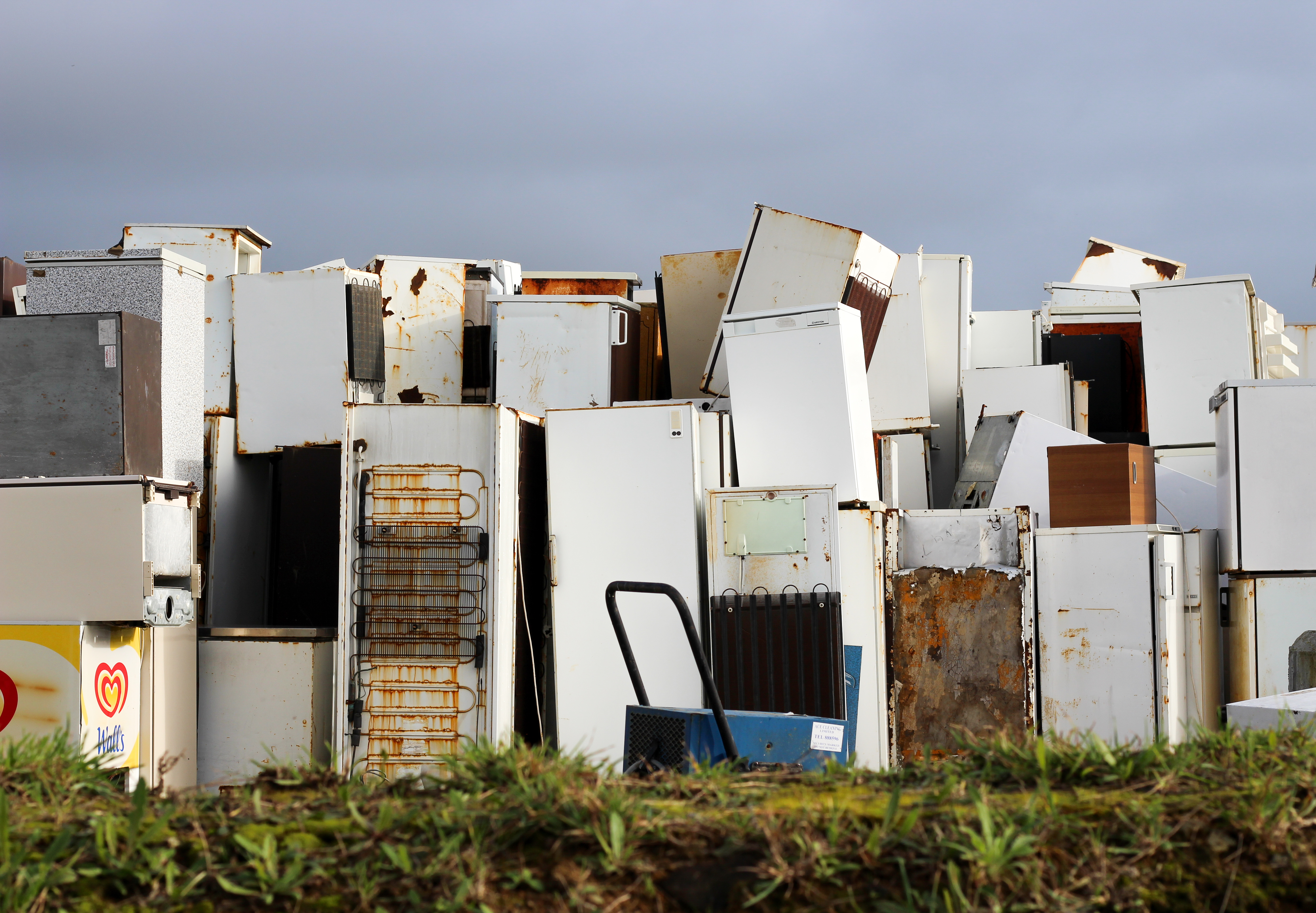 The reason I selected this image as my favorite photo from the entire shoot was because of its composition and symmetry, whilst explicitly putting across my view of how we are treating certain areas of Jersey. What drew me in was how careless the fridges were thrown on top of each other, however at the same time creates a pattern that suggests each fridge was placed with purpose to produce this wall of white. I also really like how certain objects in the wall broke up the white pattern such as the cooler, rust and holes which pop up from time to time between the fridges.
The reason I selected this image as my favorite photo from the entire shoot was because of its composition and symmetry, whilst explicitly putting across my view of how we are treating certain areas of Jersey. What drew me in was how careless the fridges were thrown on top of each other, however at the same time creates a pattern that suggests each fridge was placed with purpose to produce this wall of white. I also really like how certain objects in the wall broke up the white pattern such as the cooler, rust and holes which pop up from time to time between the fridges.

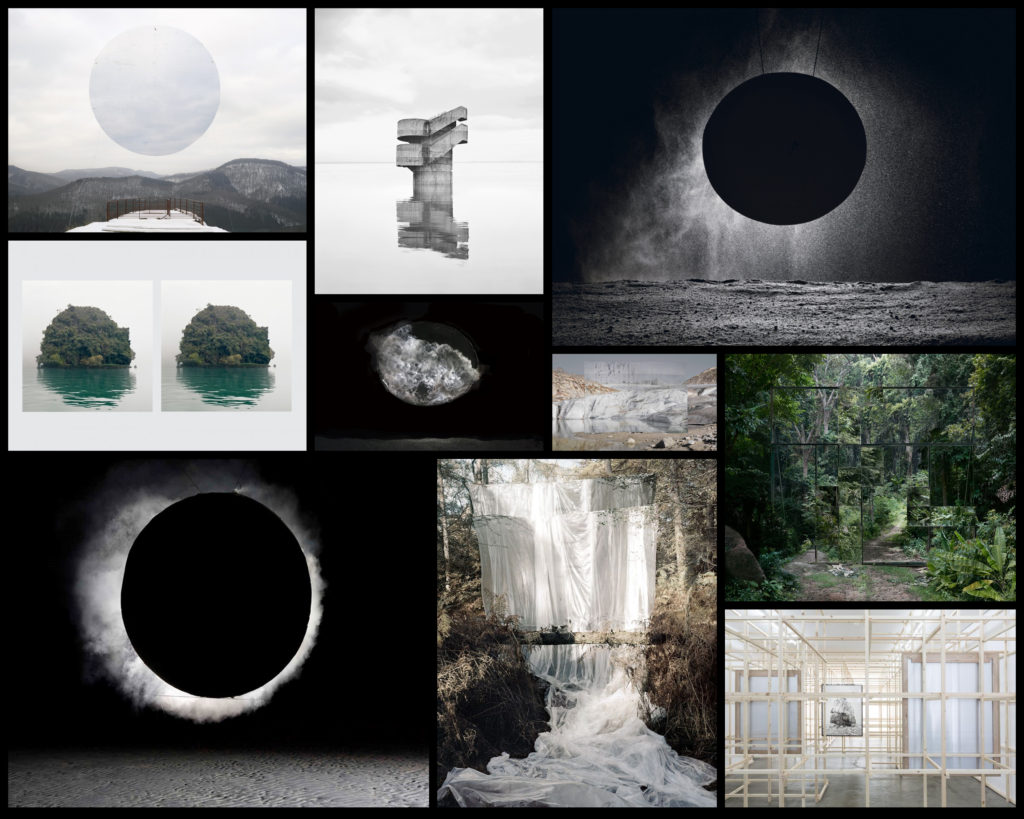
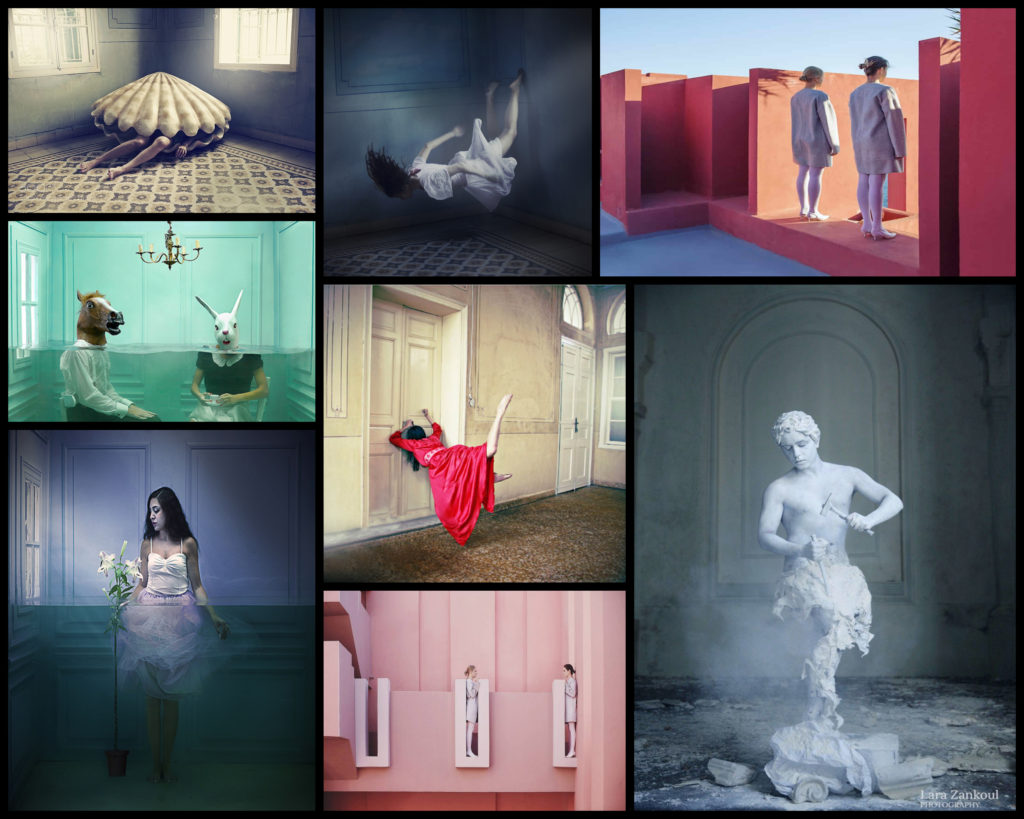
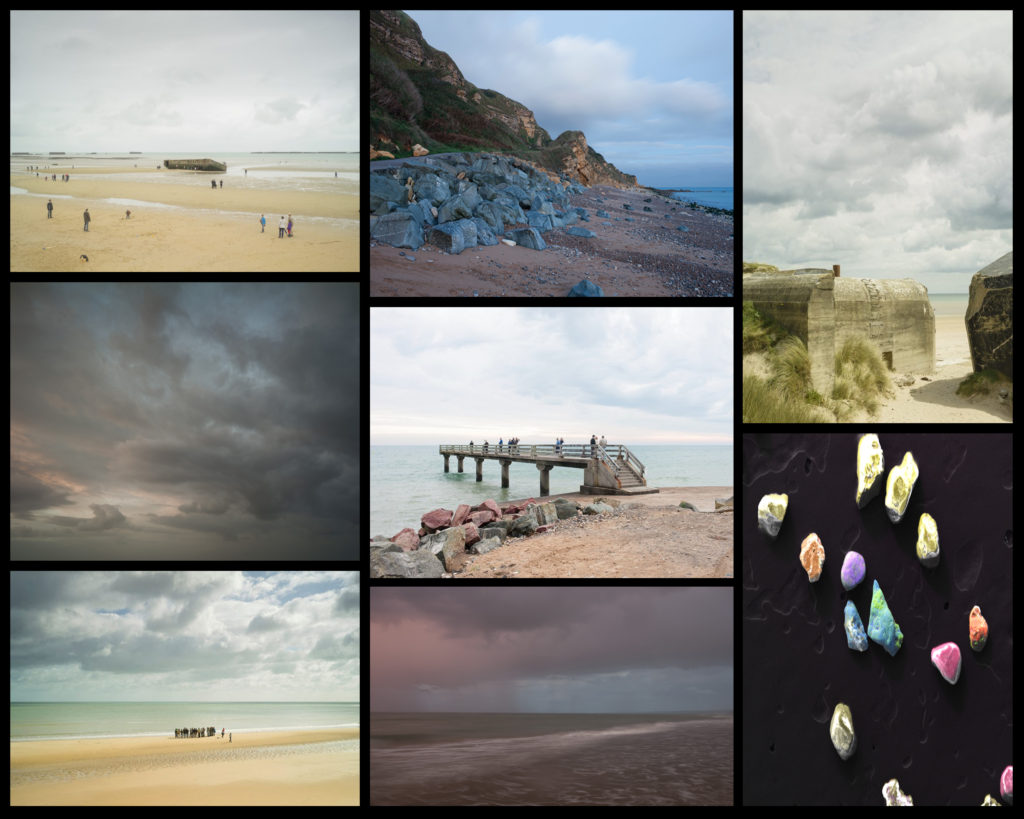
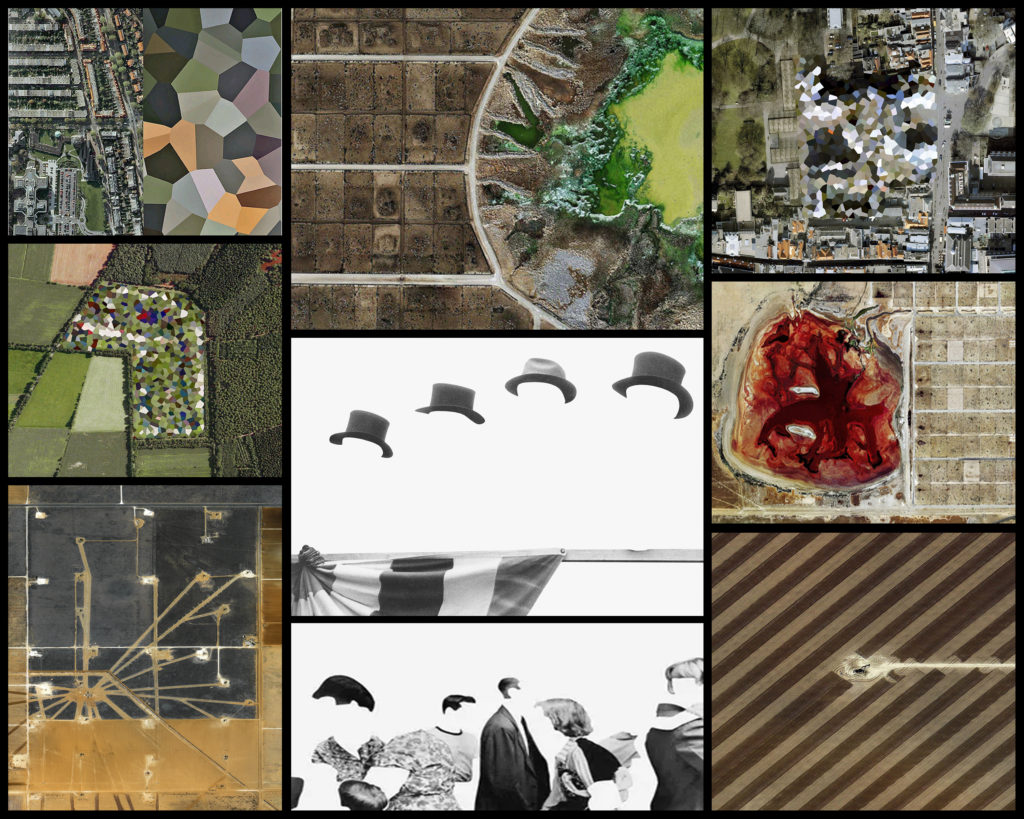




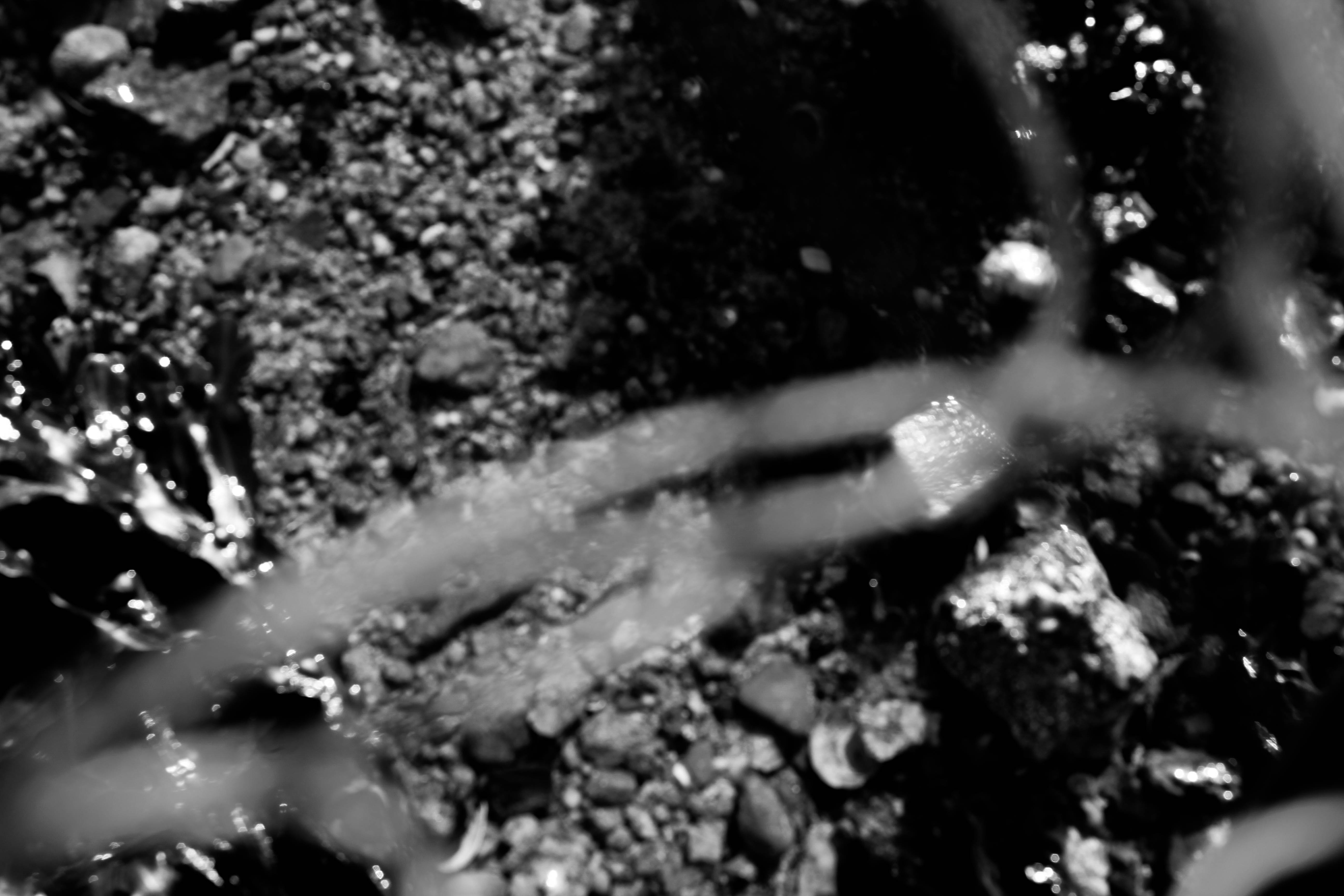
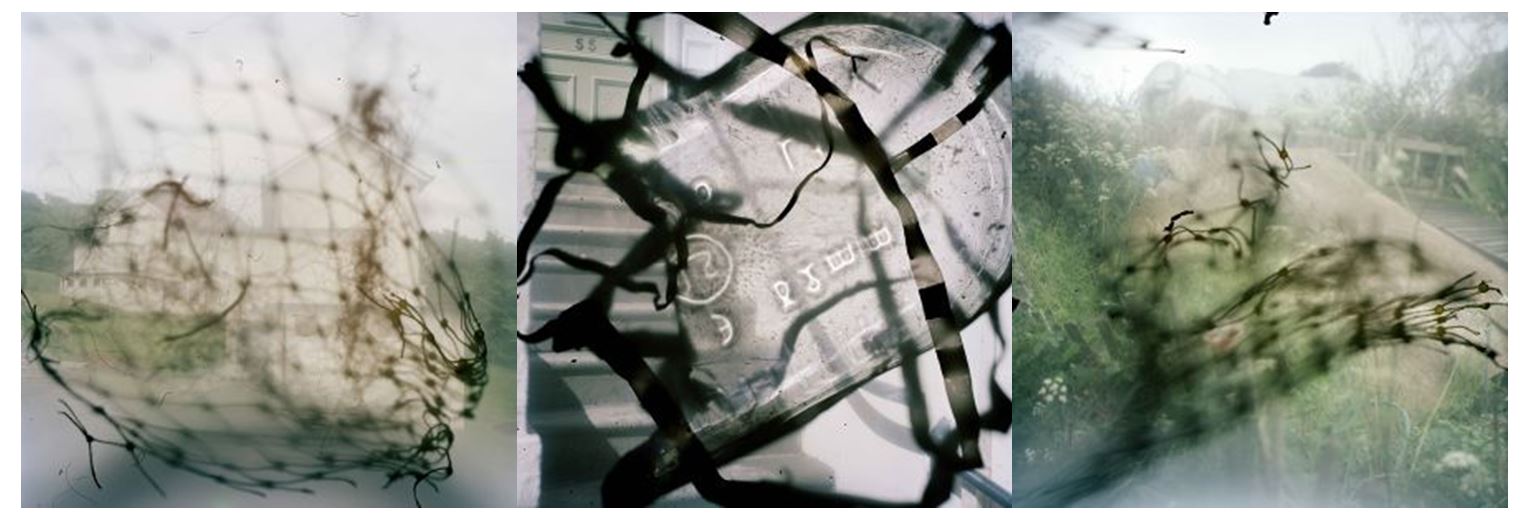
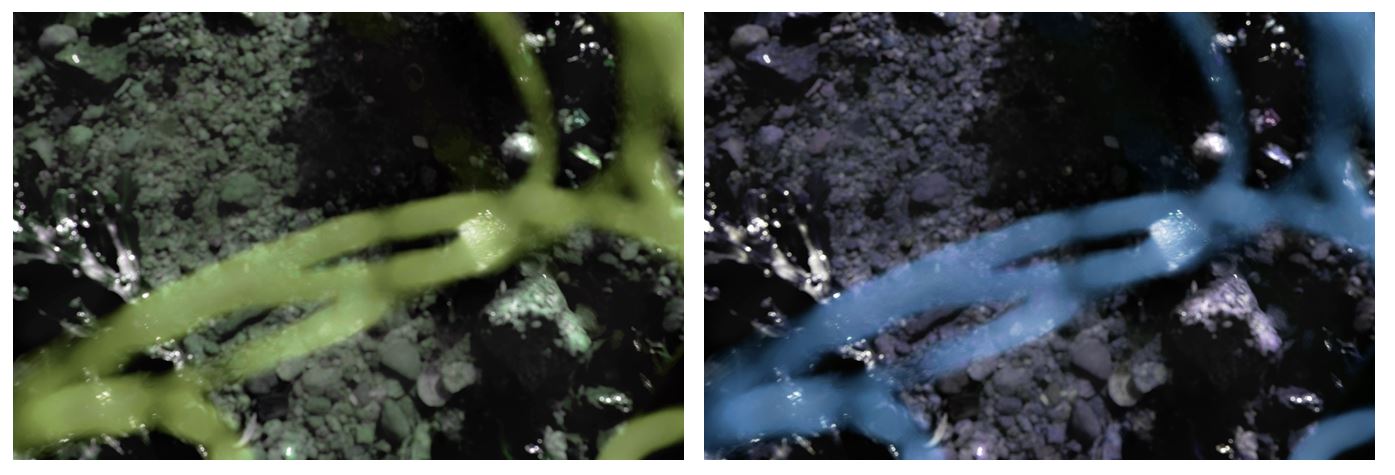
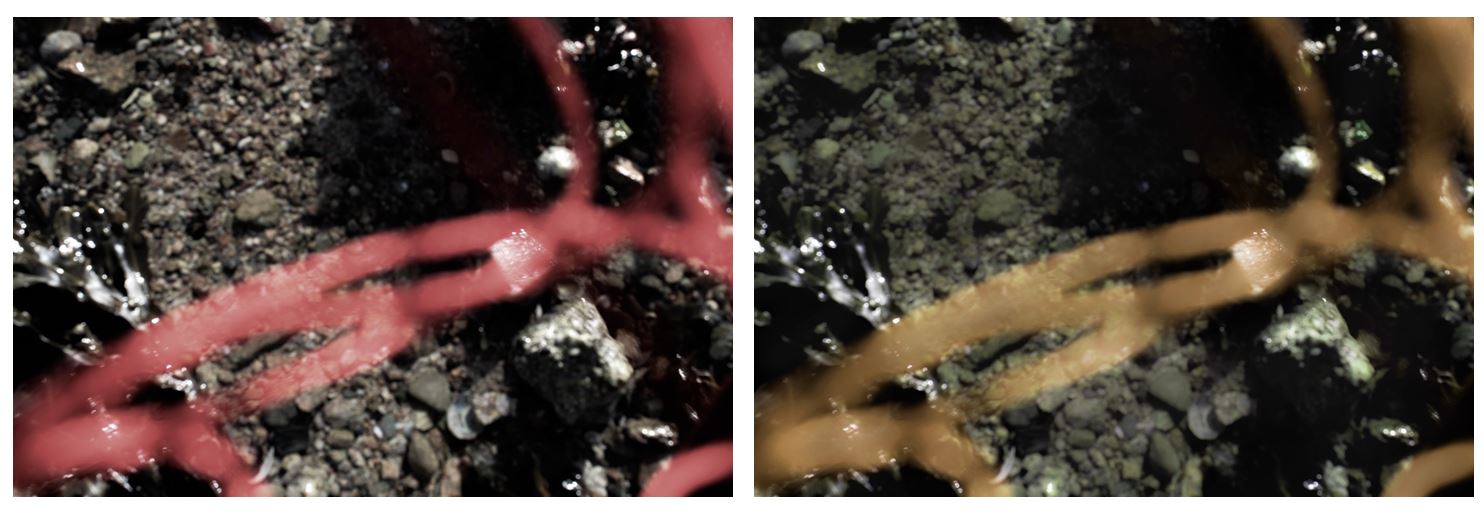
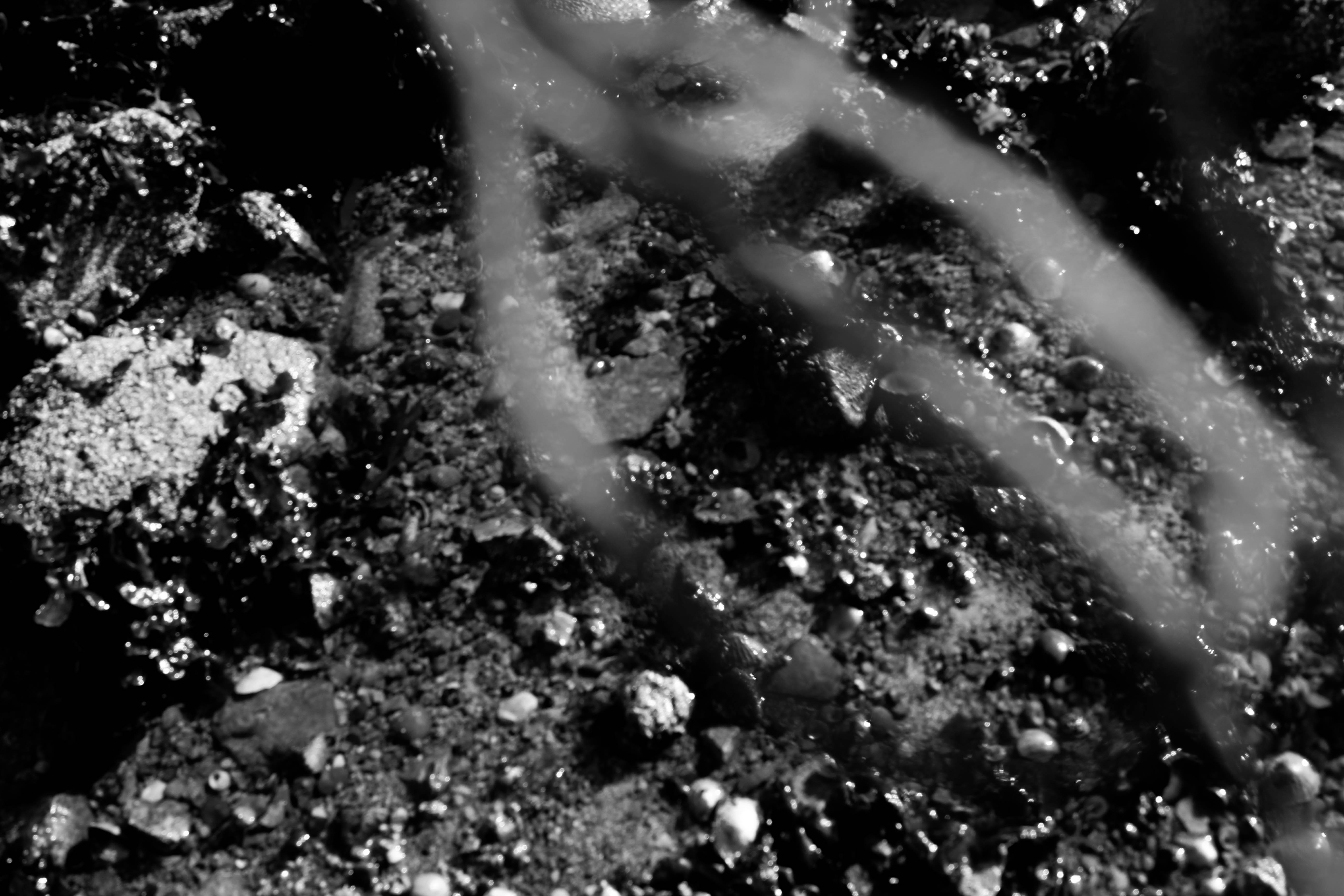
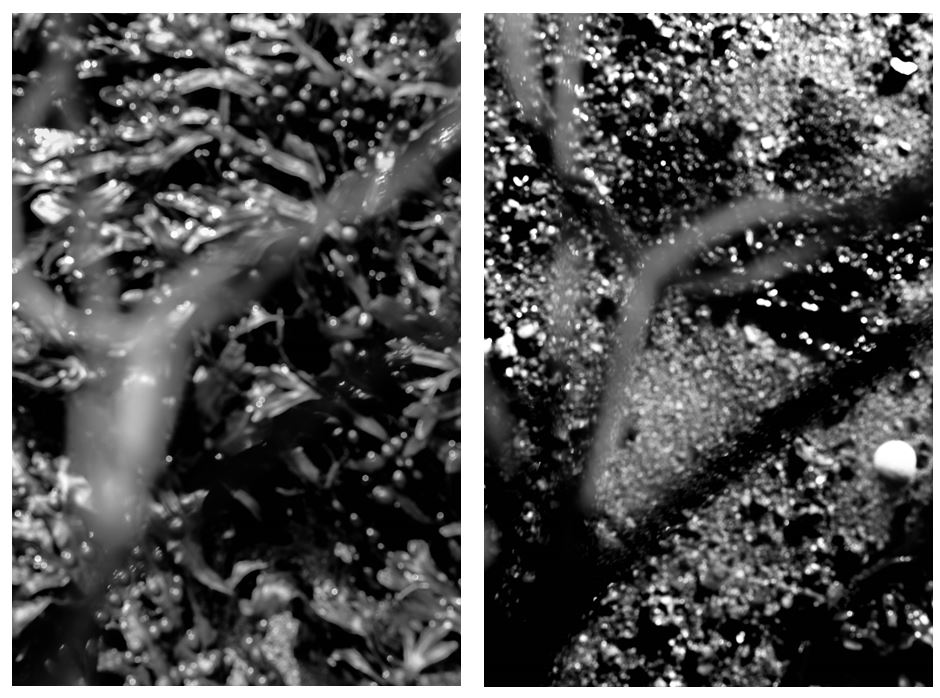


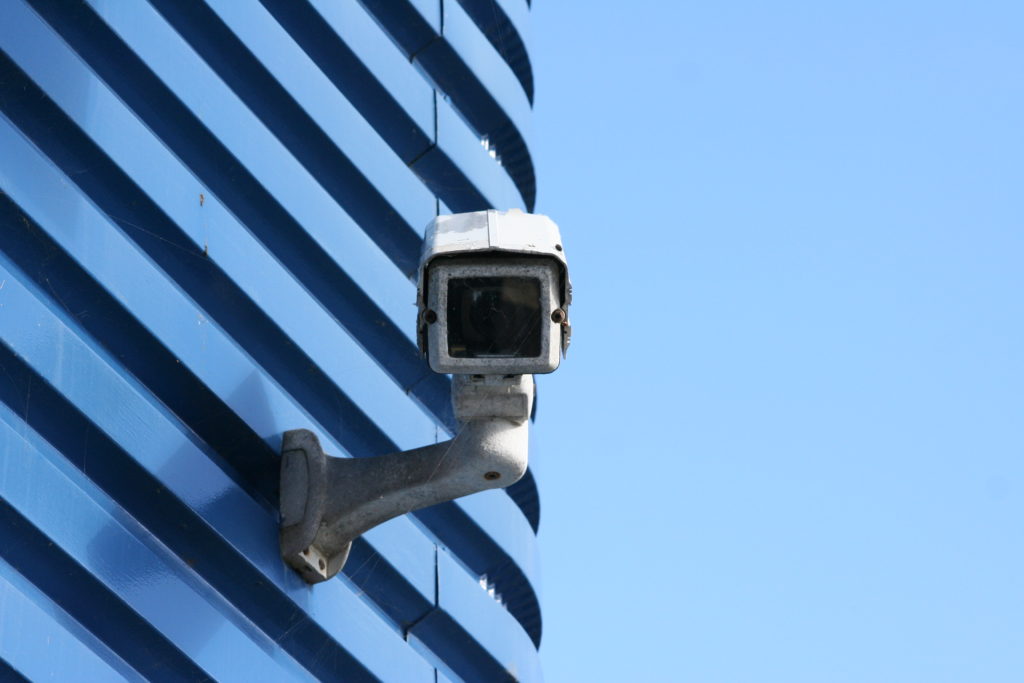



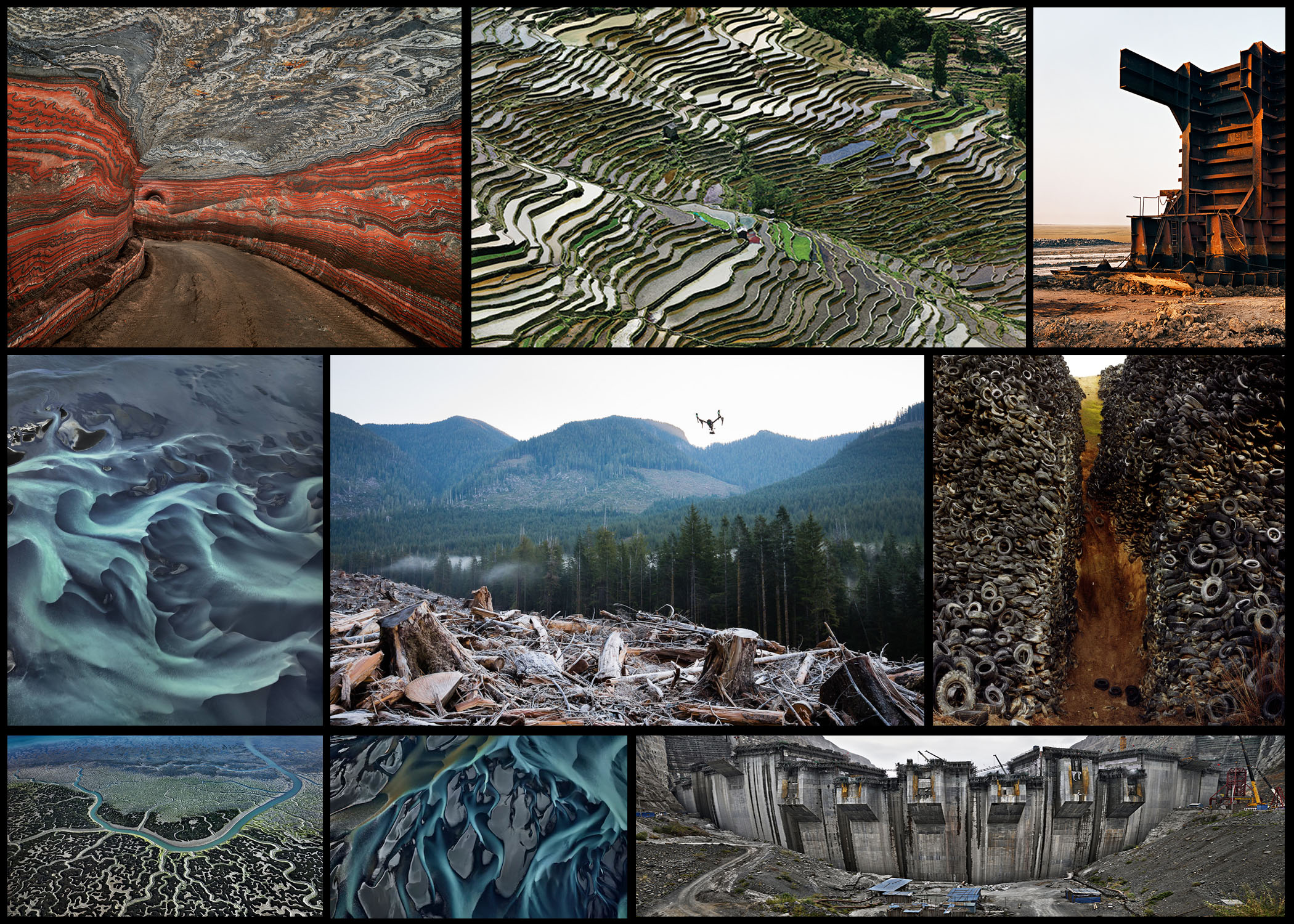 After reviewing some of his works I decided to analyse a photography that I thought summed up his style of work the best. To do this I would be looking at three specific topics: visual aspects, technical aspects and conceptual knowledge. These would allow me to incorporate his working style into my work which I could use as influence. The image I chose was “Densified Scrap Metal” (1997):
After reviewing some of his works I decided to analyse a photography that I thought summed up his style of work the best. To do this I would be looking at three specific topics: visual aspects, technical aspects and conceptual knowledge. These would allow me to incorporate his working style into my work which I could use as influence. The image I chose was “Densified Scrap Metal” (1997):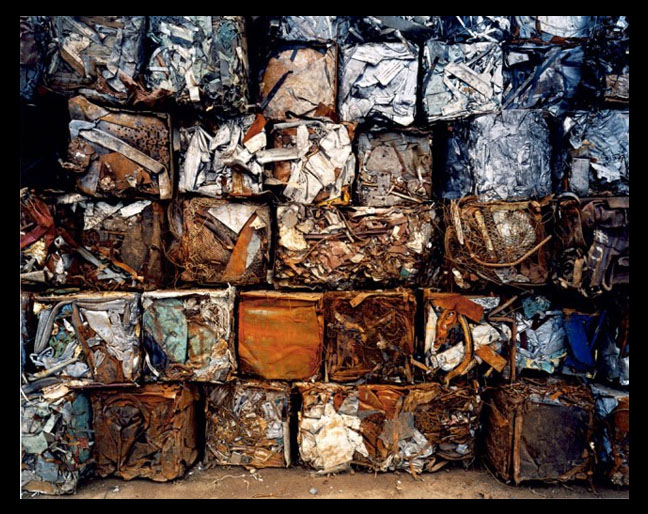
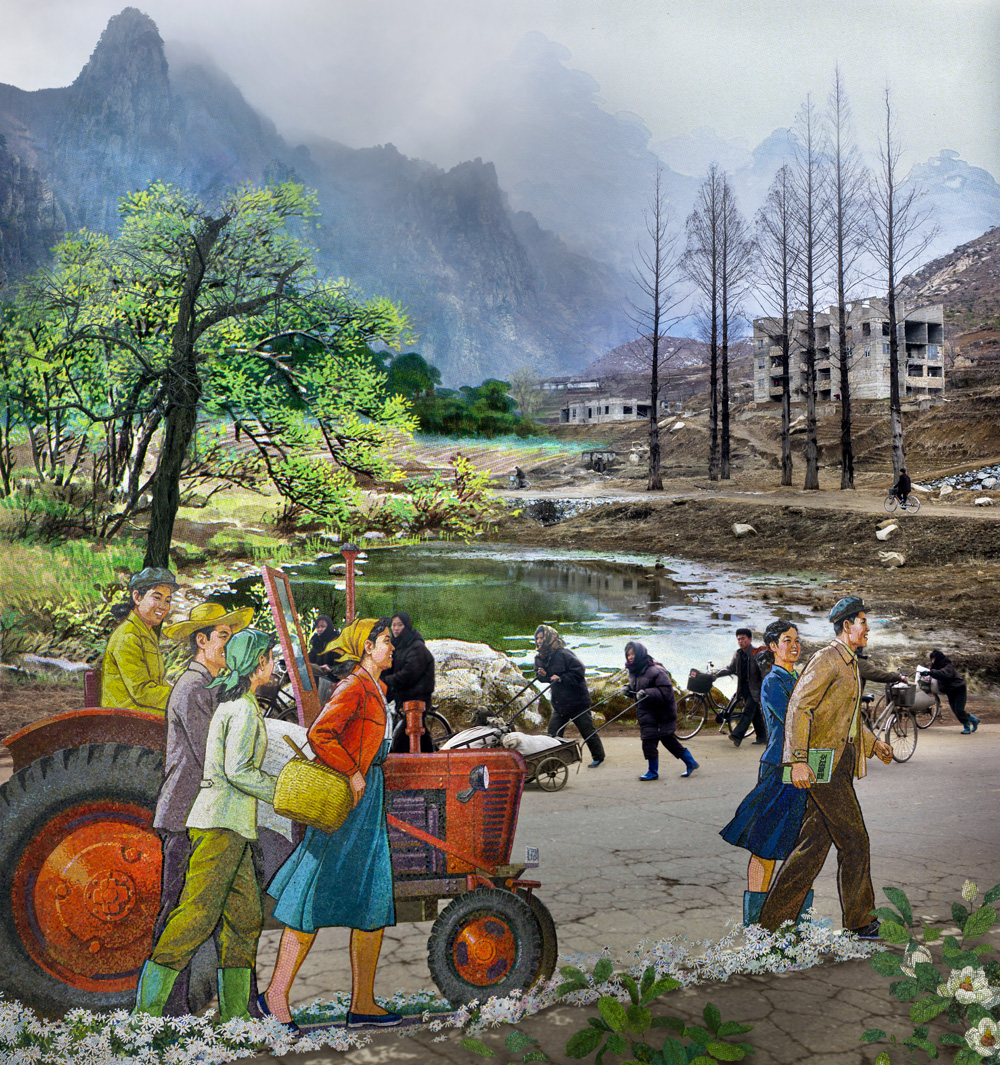

 One of the leading inspirations that I came across for the shoot was the photographer Donald Weber. Weber had used rule of the camera as the main focus point for many of his previous shoots, a certain example of this was named War Sand. War Sand used microscopes to identify otherwise undetectable pieces of metal that were left behind from the World Wars, creating abstract and alien like results. This would rely heavily on other technology to produce the outcome Weber desired as it used external software instead of the camera, with the camera itself only playing a small part of the final result. Here are some of the examples I found to be the most effective from Weber’s project War Sand:
One of the leading inspirations that I came across for the shoot was the photographer Donald Weber. Weber had used rule of the camera as the main focus point for many of his previous shoots, a certain example of this was named War Sand. War Sand used microscopes to identify otherwise undetectable pieces of metal that were left behind from the World Wars, creating abstract and alien like results. This would rely heavily on other technology to produce the outcome Weber desired as it used external software instead of the camera, with the camera itself only playing a small part of the final result. Here are some of the examples I found to be the most effective from Weber’s project War Sand: Once finished with exploring inspirations for my shoot I found that I would need to create a mind-map that would identify areas of focus when taking photographs. This time wise would help loads as it would prevent me from wasting time on the day as to what to look for, instead creating a clear picture from the start into what I should identify as my main points of interest. Here are some of the ideas that I found would have particular importance for the shoot:
Once finished with exploring inspirations for my shoot I found that I would need to create a mind-map that would identify areas of focus when taking photographs. This time wise would help loads as it would prevent me from wasting time on the day as to what to look for, instead creating a clear picture from the start into what I should identify as my main points of interest. Here are some of the ideas that I found would have particular importance for the shoot: After creating the mind-map I found I was finally ready to go ahead with the shoot, taking into consideration the ideas recently drawn up and presented above I decided to focus my shoot around areas of historic relevance. This would consist of bunkers, castles etc, which would enable me to photograph unusual structures and landscapes unique to that area, with pattern and abstract being my main aims to achieve out of the entire shoot. Here I would look at how over time certain areas have deteriorated and how the surrounding landscape has adapted to fit in around it, specifically looking at rust and the area around it. Here are the outcomes from my shoot:
After creating the mind-map I found I was finally ready to go ahead with the shoot, taking into consideration the ideas recently drawn up and presented above I decided to focus my shoot around areas of historic relevance. This would consist of bunkers, castles etc, which would enable me to photograph unusual structures and landscapes unique to that area, with pattern and abstract being my main aims to achieve out of the entire shoot. Here I would look at how over time certain areas have deteriorated and how the surrounding landscape has adapted to fit in around it, specifically looking at rust and the area around it. Here are the outcomes from my shoot: 

 From here I will select ten images that I found were the most effective outcomes from the entire shoot. By doing this it would allow a greater insight into what made me select these images and how I would select the final and best picture from the shoot.
From here I will select ten images that I found were the most effective outcomes from the entire shoot. By doing this it would allow a greater insight into what made me select these images and how I would select the final and best picture from the shoot.

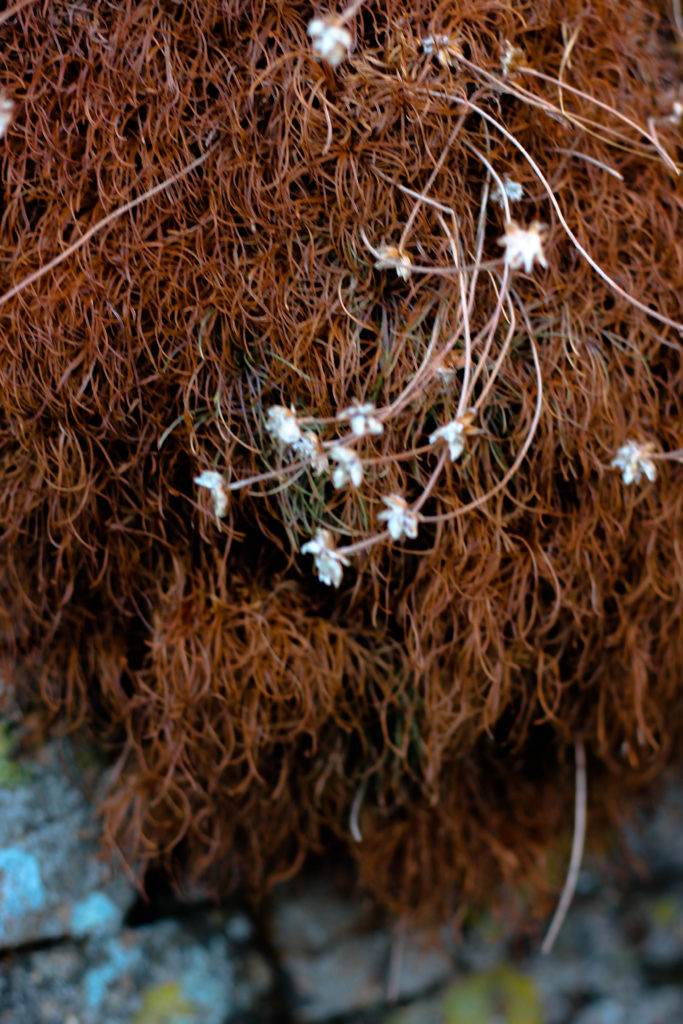

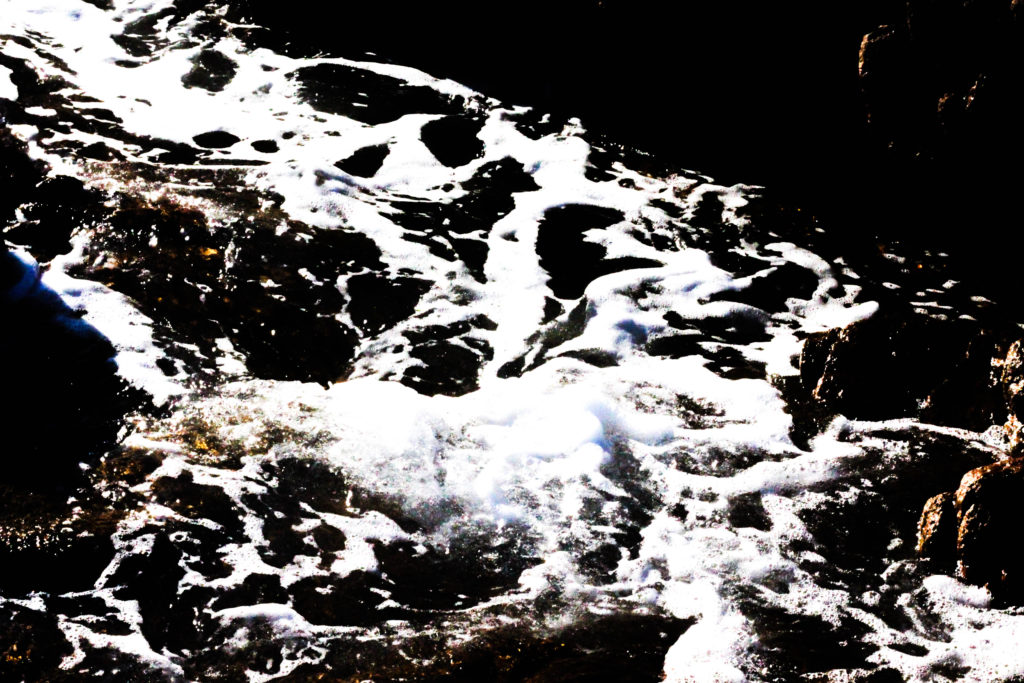




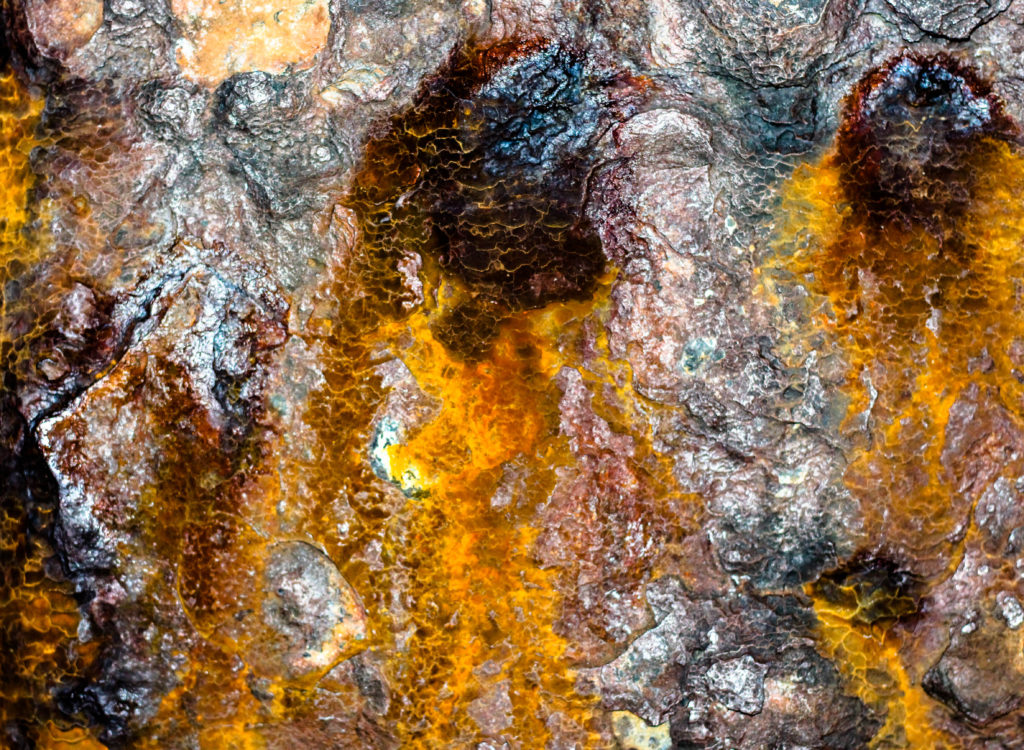 After looking over what I deemed to be my best imagery from the shoot I decided to select the best five photos and analyse them. By doing this it would allow me to understand how they could be related to the topic of conventions, whilst discovering what aspects within the photographs made them so effective that I chose them out of the shoot. Here is my selection of my favorite five images:
After looking over what I deemed to be my best imagery from the shoot I decided to select the best five photos and analyse them. By doing this it would allow me to understand how they could be related to the topic of conventions, whilst discovering what aspects within the photographs made them so effective that I chose them out of the shoot. Here is my selection of my favorite five images: I chose this image because of the broken pattern created by the foam on the waves that fade into the sky, I found this to be particularly effective from how the placement of the foam keeps the sea symmetrical either side of it. This is also complimented by the gradient of the sky which fades the landscape out, both of these relate to the topic of conventions from the use of a higher exposure and clarity to capture the light more vividly, producing a dream like scape as a result. Convention wise I wish to highlight the mass of sea that surrounds us on our island and how the built up areas of bunkers made by the Germans intended to use this to their advantage in their defenses.
I chose this image because of the broken pattern created by the foam on the waves that fade into the sky, I found this to be particularly effective from how the placement of the foam keeps the sea symmetrical either side of it. This is also complimented by the gradient of the sky which fades the landscape out, both of these relate to the topic of conventions from the use of a higher exposure and clarity to capture the light more vividly, producing a dream like scape as a result. Convention wise I wish to highlight the mass of sea that surrounds us on our island and how the built up areas of bunkers made by the Germans intended to use this to their advantage in their defenses.  What I liked about this image was how it highlighted the rust that now had settled on the metal surrounding the artillery covering the now ruined bunkers dotted around. This is contrasted by the high clarity which creates a particular focus on the rust of the image, portraying it almost as blood whilst making use of the dark backdrop to create a real identity of how much of the weaponry now stands in Jersey. I really like the stained pattern that the rust made on the white paint as it broke up the object resulting in an abstract after math where it’s now harder to interpret what the object used to be.
What I liked about this image was how it highlighted the rust that now had settled on the metal surrounding the artillery covering the now ruined bunkers dotted around. This is contrasted by the high clarity which creates a particular focus on the rust of the image, portraying it almost as blood whilst making use of the dark backdrop to create a real identity of how much of the weaponry now stands in Jersey. I really like the stained pattern that the rust made on the white paint as it broke up the object resulting in an abstract after math where it’s now harder to interpret what the object used to be. Here I found the use of a predominantly black and white photo to be very effective in the representation I wished to put across of the tide that sweeps the shores of the bunkers surrounding the beaches. By reducing it too mainly two shades I found that it abstracted the piece and instead limited the blues and browns to only the rocks and specific areas of the water. What I really liked was the composition of the wave as it came into shore, travelling from the top left corner into the bottom right spreading out as it does so, I found this to be a great representation of how tides would have looked as the historical events that surrounded it unfolded around it.
Here I found the use of a predominantly black and white photo to be very effective in the representation I wished to put across of the tide that sweeps the shores of the bunkers surrounding the beaches. By reducing it too mainly two shades I found that it abstracted the piece and instead limited the blues and browns to only the rocks and specific areas of the water. What I really liked was the composition of the wave as it came into shore, travelling from the top left corner into the bottom right spreading out as it does so, I found this to be a great representation of how tides would have looked as the historical events that surrounded it unfolded around it.  The reason I chose this image for my top five was because of the use of a low exposure to create a sinister and looming impression upon the commonly used doors of the German bunkers. The use of a vandalized door to me represented the now forgotten past of certain areas and how overlooked they have now become, with many being the subject of graffiti and writing, defacing what they previously stood for, defense. The composition I thought strengthened this idea as it produces the impression of order and mystery, interesting the viewer to want to understand what went on behind the doors.
The reason I chose this image for my top five was because of the use of a low exposure to create a sinister and looming impression upon the commonly used doors of the German bunkers. The use of a vandalized door to me represented the now forgotten past of certain areas and how overlooked they have now become, with many being the subject of graffiti and writing, defacing what they previously stood for, defense. The composition I thought strengthened this idea as it produces the impression of order and mystery, interesting the viewer to want to understand what went on behind the doors.  Finally the reason I selected this image was because of the aesthetically pleasing result that the sandbags lining the shores of the coast around the bunkers would be positioned and portrayed in. The netting within the picture I found broke up the otherwise boring piece which would have just consisted of brown bags, instead adding an opposing colour of green and blue to it, creating the impression that the nets are almost there to preserve and hold together the remains of the defenses previously present around the beach.
Finally the reason I selected this image was because of the aesthetically pleasing result that the sandbags lining the shores of the coast around the bunkers would be positioned and portrayed in. The netting within the picture I found broke up the otherwise boring piece which would have just consisted of brown bags, instead adding an opposing colour of green and blue to it, creating the impression that the nets are almost there to preserve and hold together the remains of the defenses previously present around the beach. From here I decided to analyse one of Weber’s images, by doing this it would allow me to understand the thought process and concept behind his photography, whilst looking at the different techniques used to produce his work. From this it would allow me to create a more appropriate response for future shoots regarding rules of the camera, as it would enhance my insight into techniques used by the camera to make the desired product. The image I chose is called Vorkuta (2008):
From here I decided to analyse one of Weber’s images, by doing this it would allow me to understand the thought process and concept behind his photography, whilst looking at the different techniques used to produce his work. From this it would allow me to create a more appropriate response for future shoots regarding rules of the camera, as it would enhance my insight into techniques used by the camera to make the desired product. The image I chose is called Vorkuta (2008): Technical: The image itself uses a low shutter speed to capture the snow drifting in the wind, because of this it creates the impression of an almost dreamy and surreal isolated located. This use of shutter speed perfectly blurs the snow-covered ground, making it almost feel like the buildings are coming out of the ground. A relatively normal exposure is used to create contrast against the white backdrop, accompanied with a slightly tinted black border this breaks up the blank space from becoming too overpowering.
Technical: The image itself uses a low shutter speed to capture the snow drifting in the wind, because of this it creates the impression of an almost dreamy and surreal isolated located. This use of shutter speed perfectly blurs the snow-covered ground, making it almost feel like the buildings are coming out of the ground. A relatively normal exposure is used to create contrast against the white backdrop, accompanied with a slightly tinted black border this breaks up the blank space from becoming too overpowering.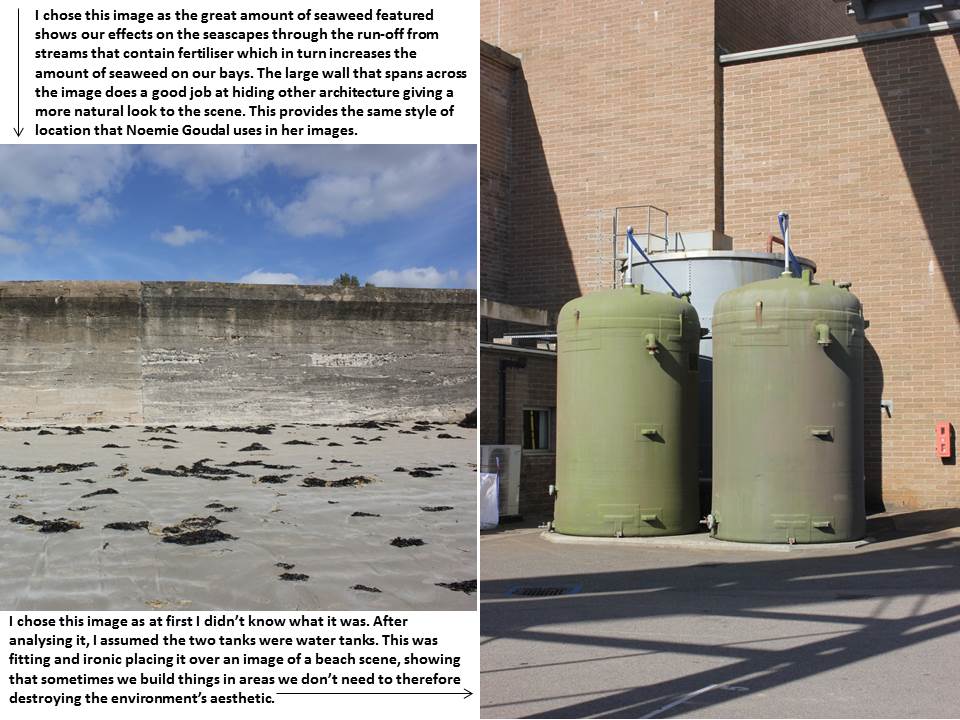
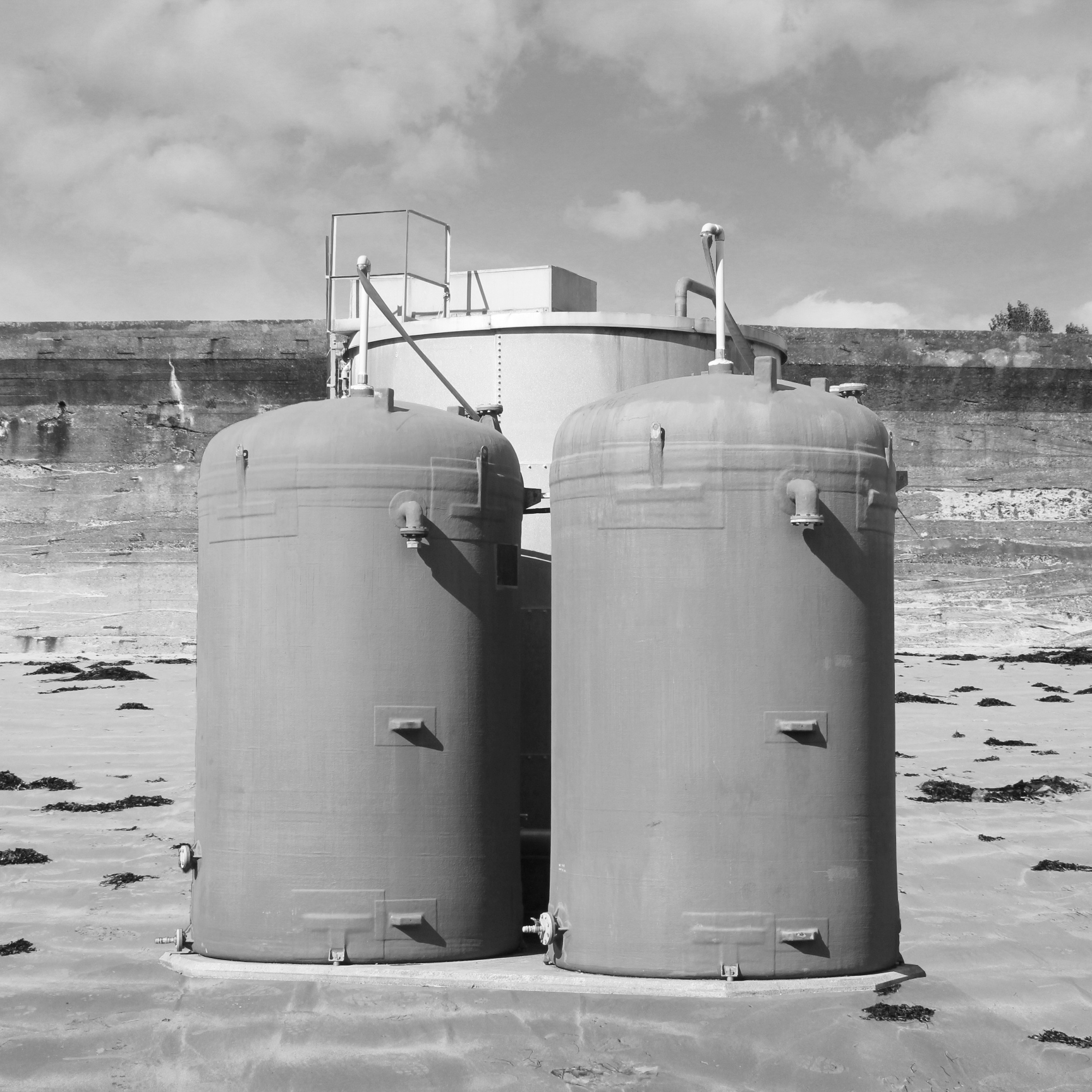
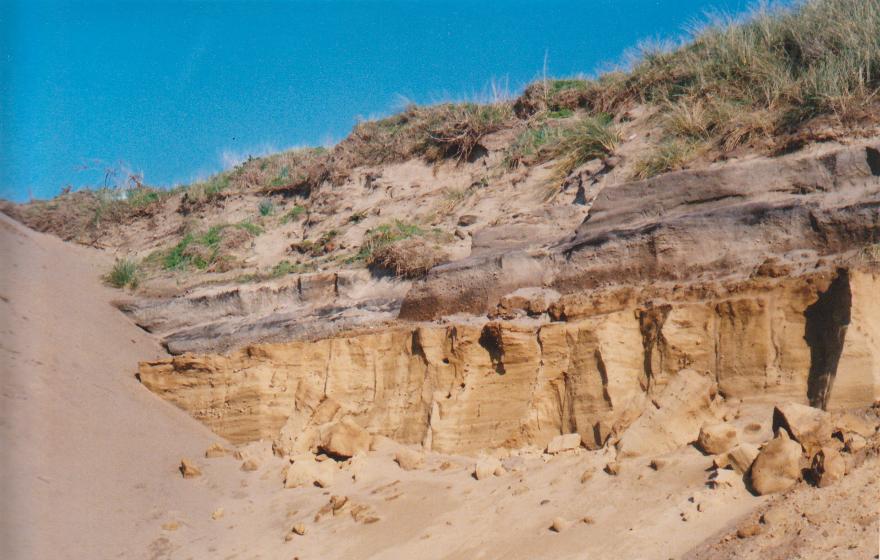

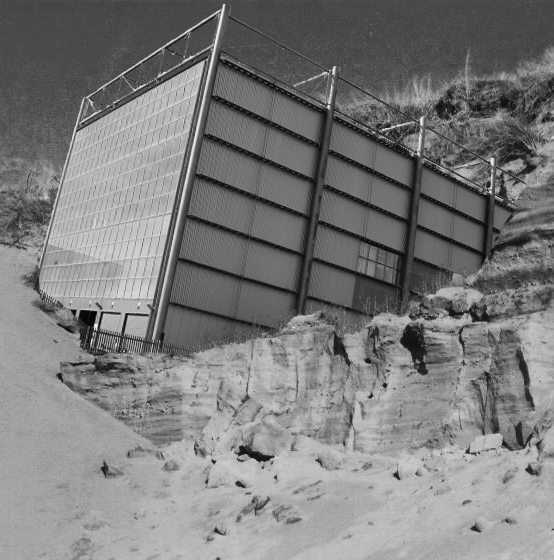
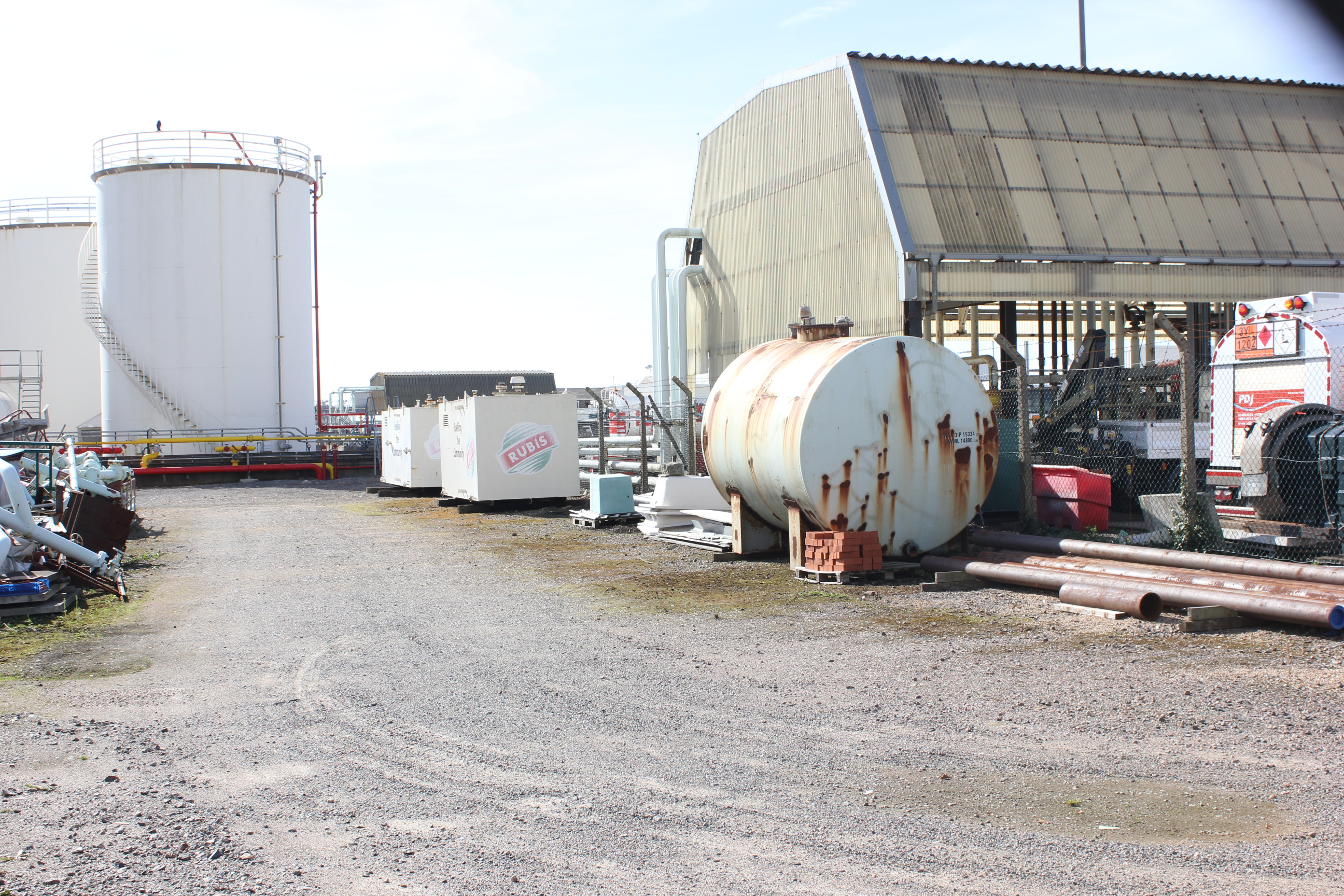

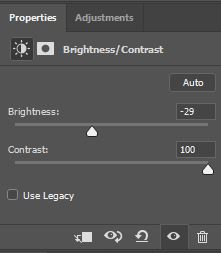
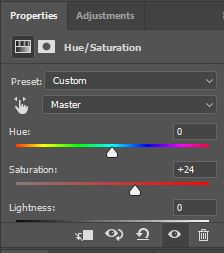
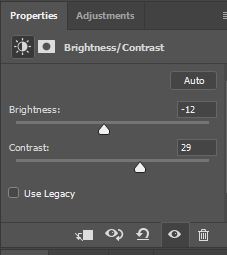
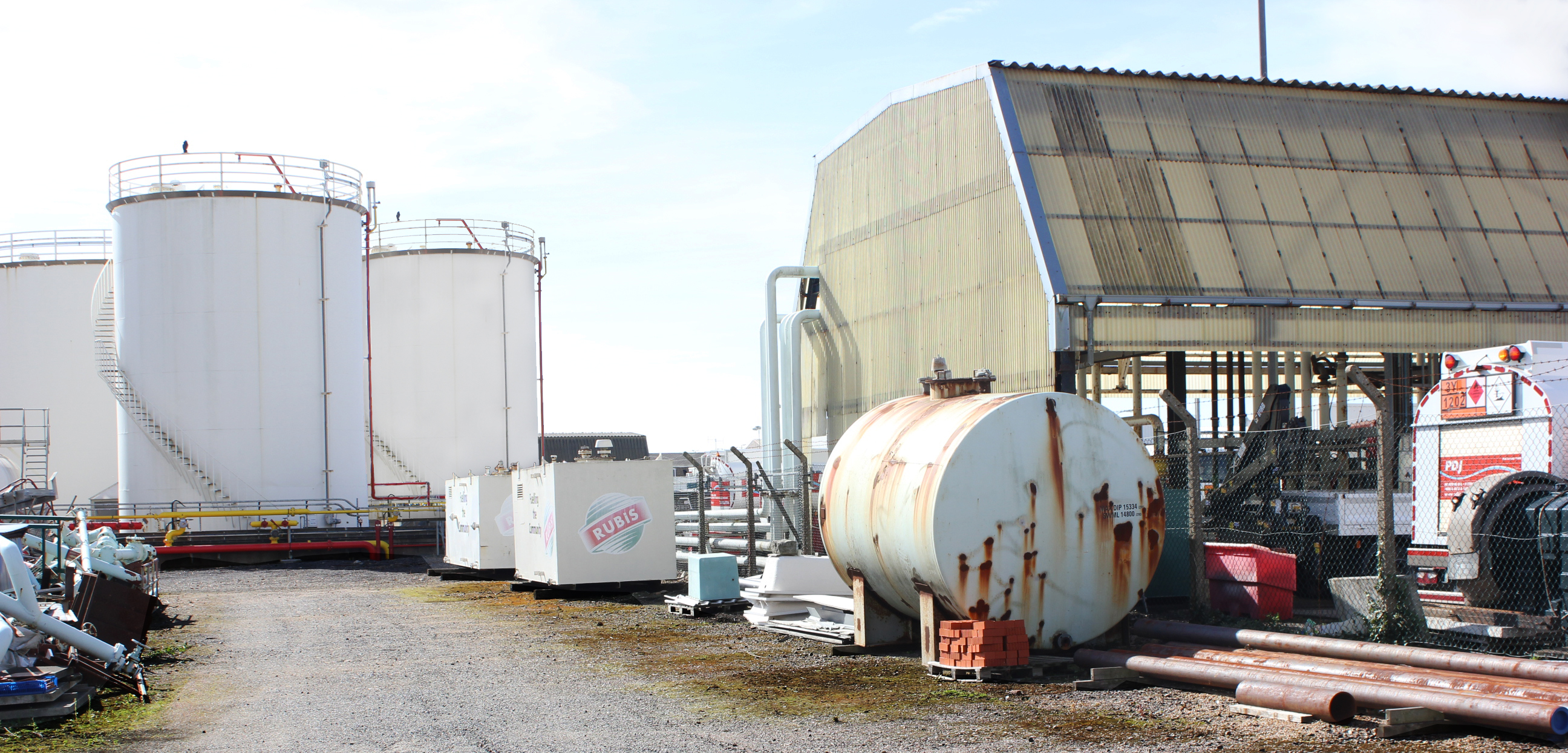

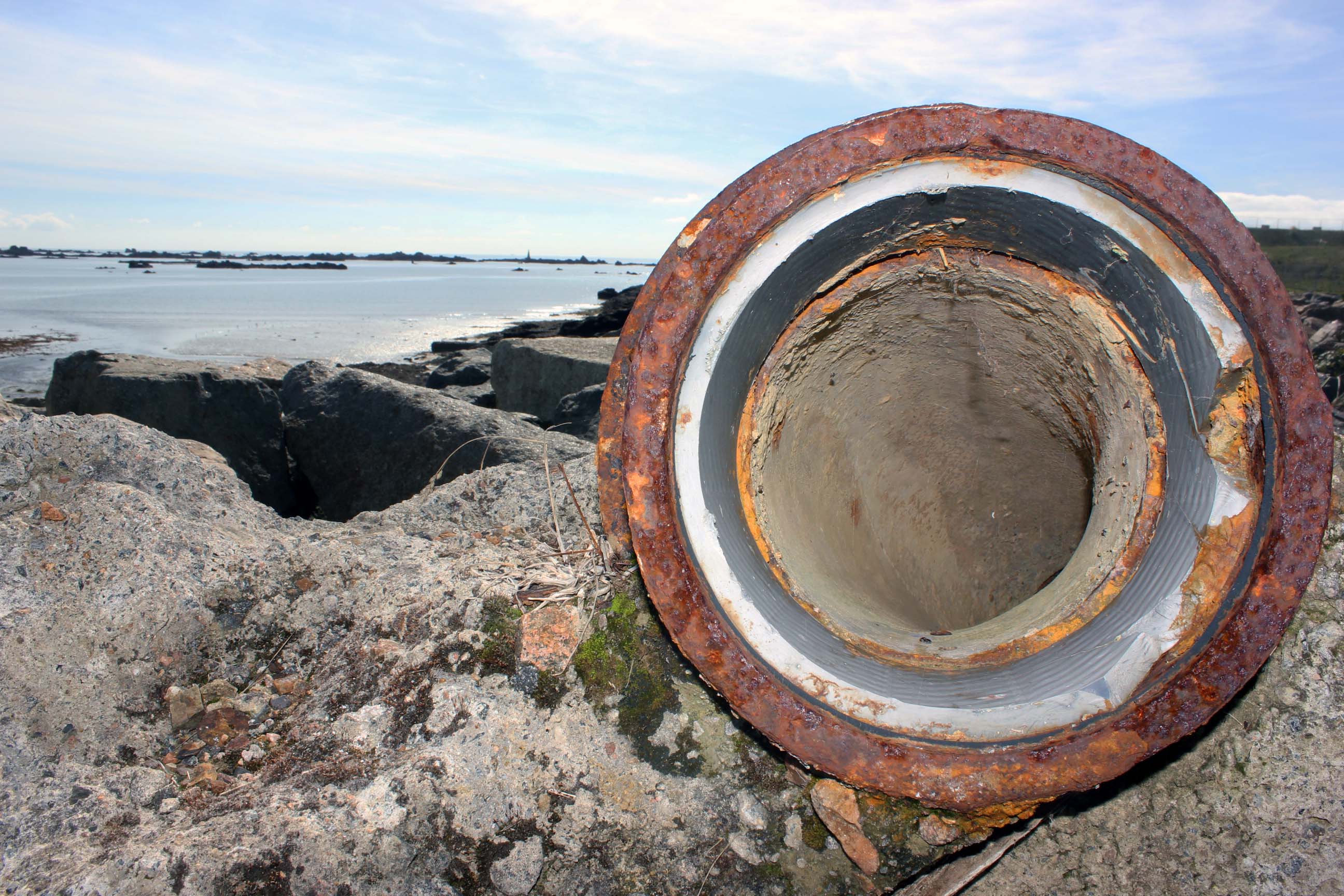
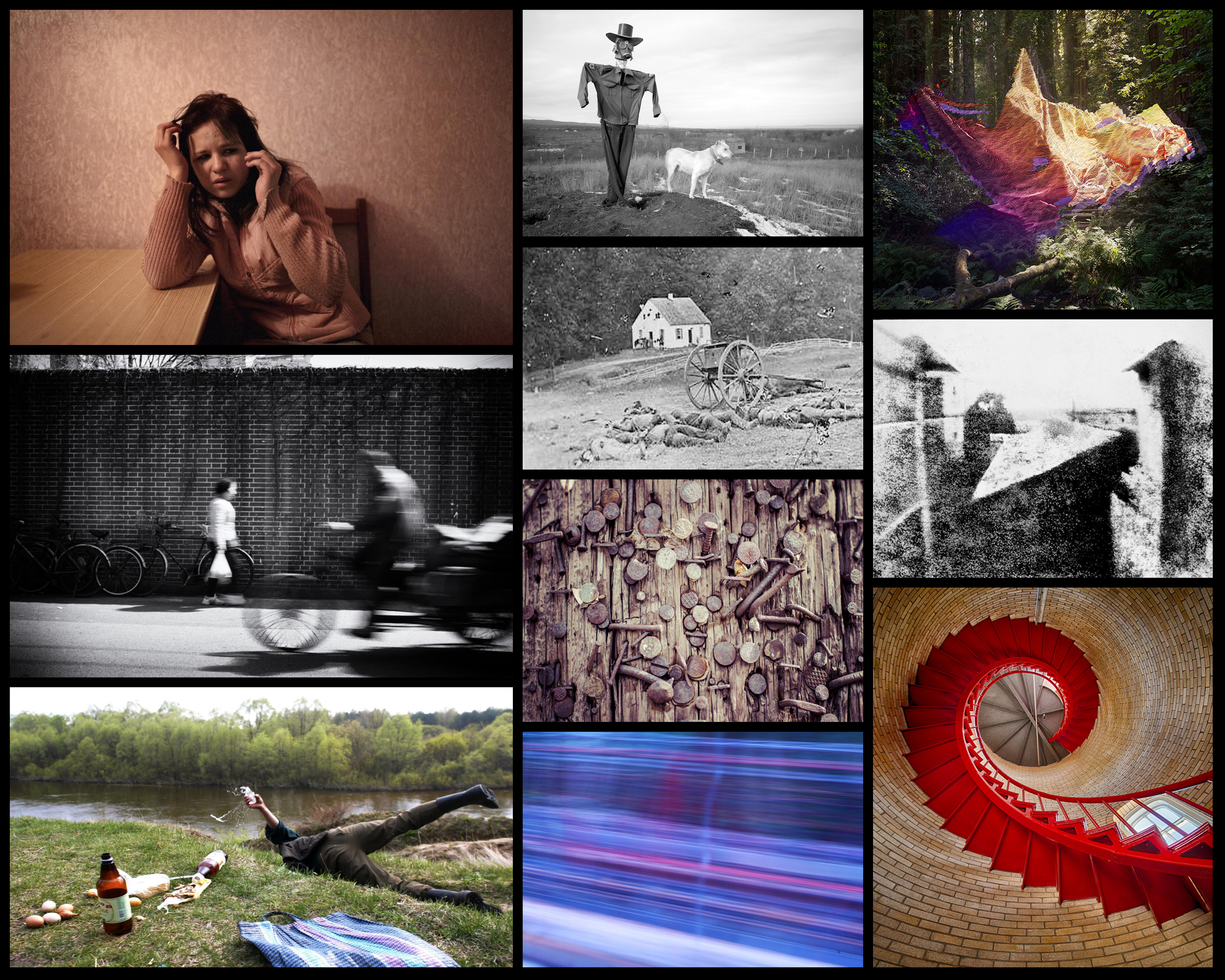 Above we can see that there seems to be a predominantly abstract and surreal theme within each photo, this is presented through bright and unusual colors composed in odd and unique ways. When studying these photos there seems to be a lot of shutter speed and exposure use, by doing so it can create scenes otherwise invisible to the naked eye allowing for aesthetically pleasing results. To understand what could be interpreted as Rule of The Camera I decided to analyse one of the images related to the topic, by doing so this would expand my stance on how I went around photographing my chosen area of political landscapes, consumerism. Here is an example of one of the many ways the topic can be explored:
Above we can see that there seems to be a predominantly abstract and surreal theme within each photo, this is presented through bright and unusual colors composed in odd and unique ways. When studying these photos there seems to be a lot of shutter speed and exposure use, by doing so it can create scenes otherwise invisible to the naked eye allowing for aesthetically pleasing results. To understand what could be interpreted as Rule of The Camera I decided to analyse one of the images related to the topic, by doing so this would expand my stance on how I went around photographing my chosen area of political landscapes, consumerism. Here is an example of one of the many ways the topic can be explored: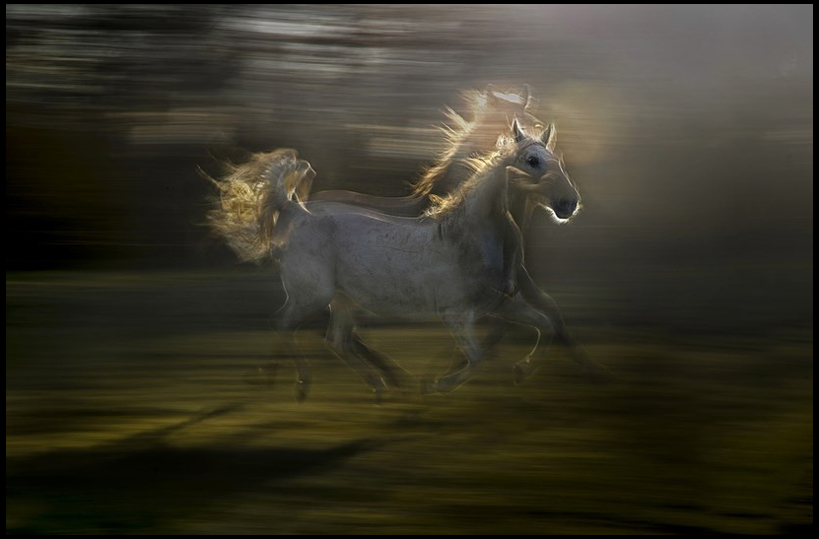 Technical: The image itself uses two overlapped images, one consisting of a higher shutter speed and the other overlying one being slower. By doing this when overlapped it creates an image depicting the horse in an act of rapid movement, the is emphasized by the blurred backdrop which wishes to capture the horse in the midst of galloping. This blur is also accompanied with a low exposure which defines the figure of the horse more against the trees, on top of this a black gradient border is used to light only the horse and a small radius around it. Due to this a more sinister feel is created outside the center of the piece, as it shrouds the vegetation from further detail.
Technical: The image itself uses two overlapped images, one consisting of a higher shutter speed and the other overlying one being slower. By doing this when overlapped it creates an image depicting the horse in an act of rapid movement, the is emphasized by the blurred backdrop which wishes to capture the horse in the midst of galloping. This blur is also accompanied with a low exposure which defines the figure of the horse more against the trees, on top of this a black gradient border is used to light only the horse and a small radius around it. Due to this a more sinister feel is created outside the center of the piece, as it shrouds the vegetation from further detail.

